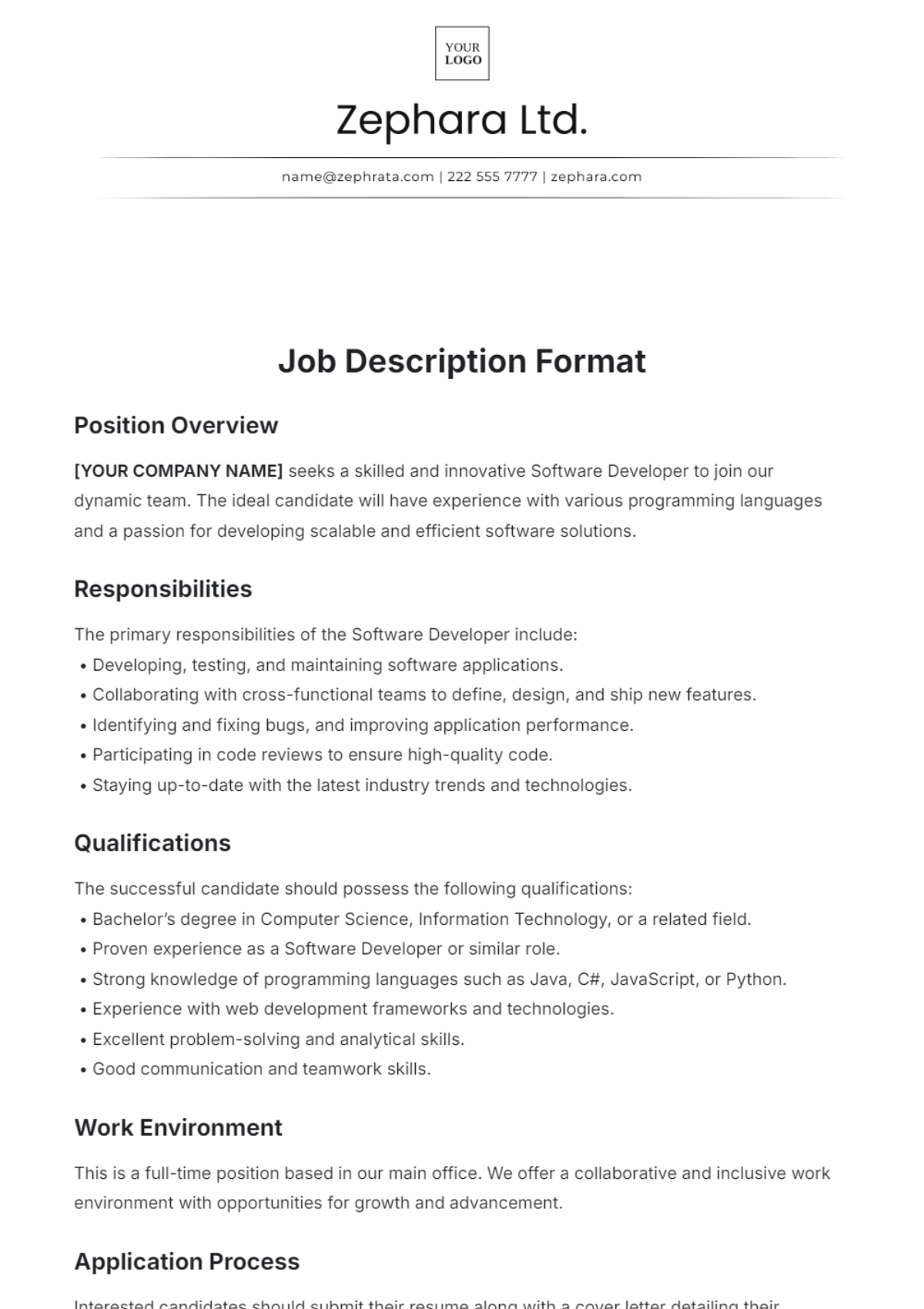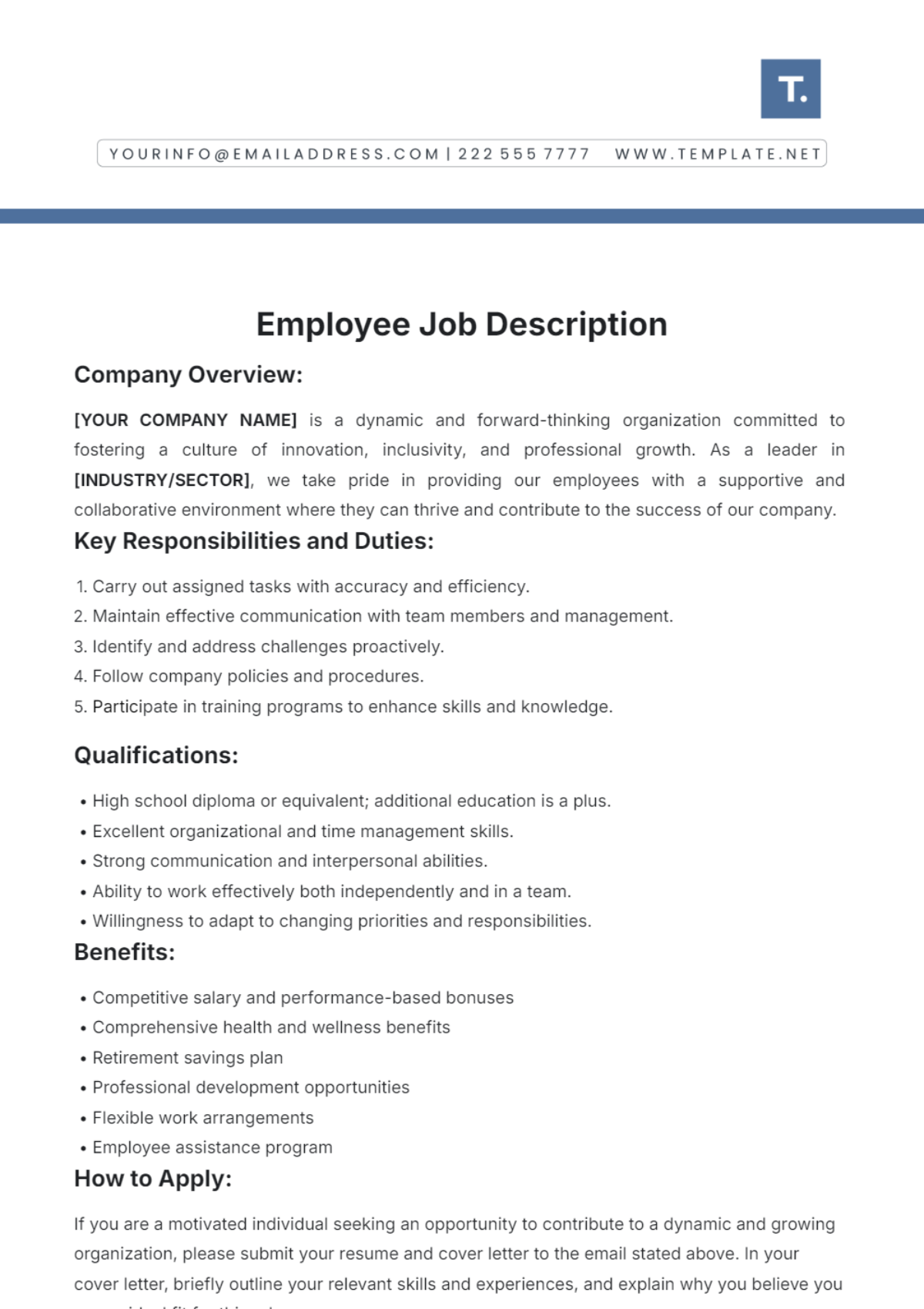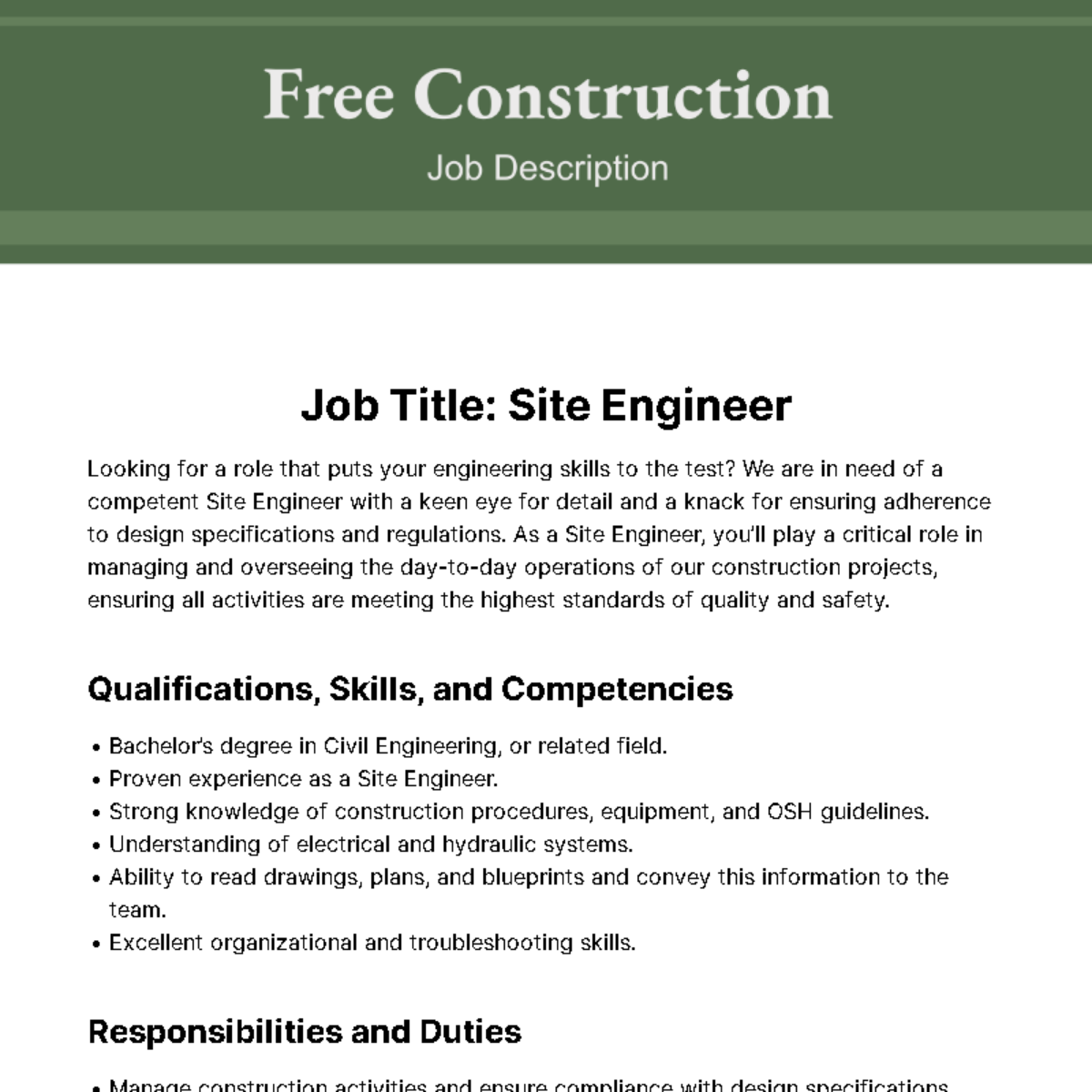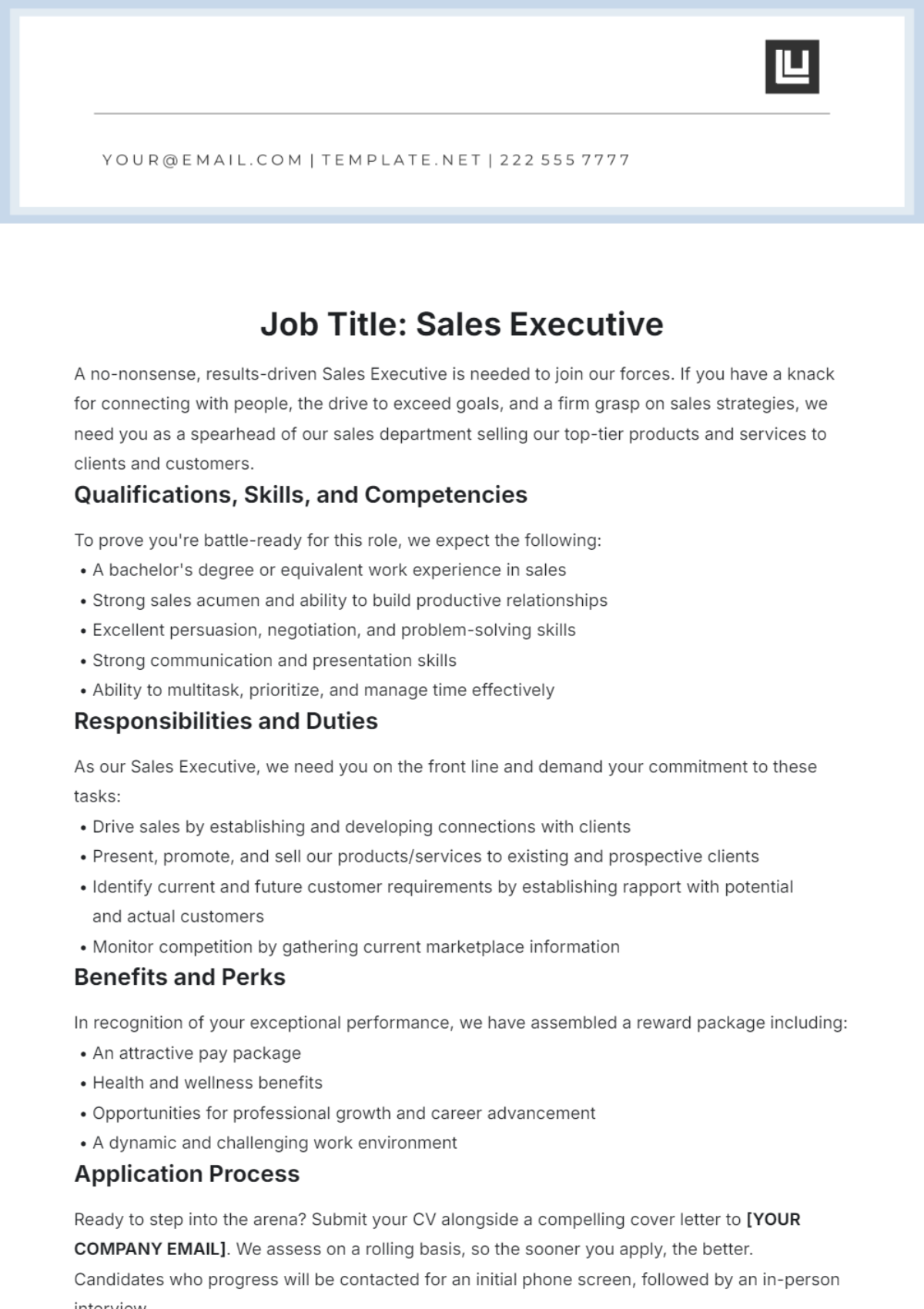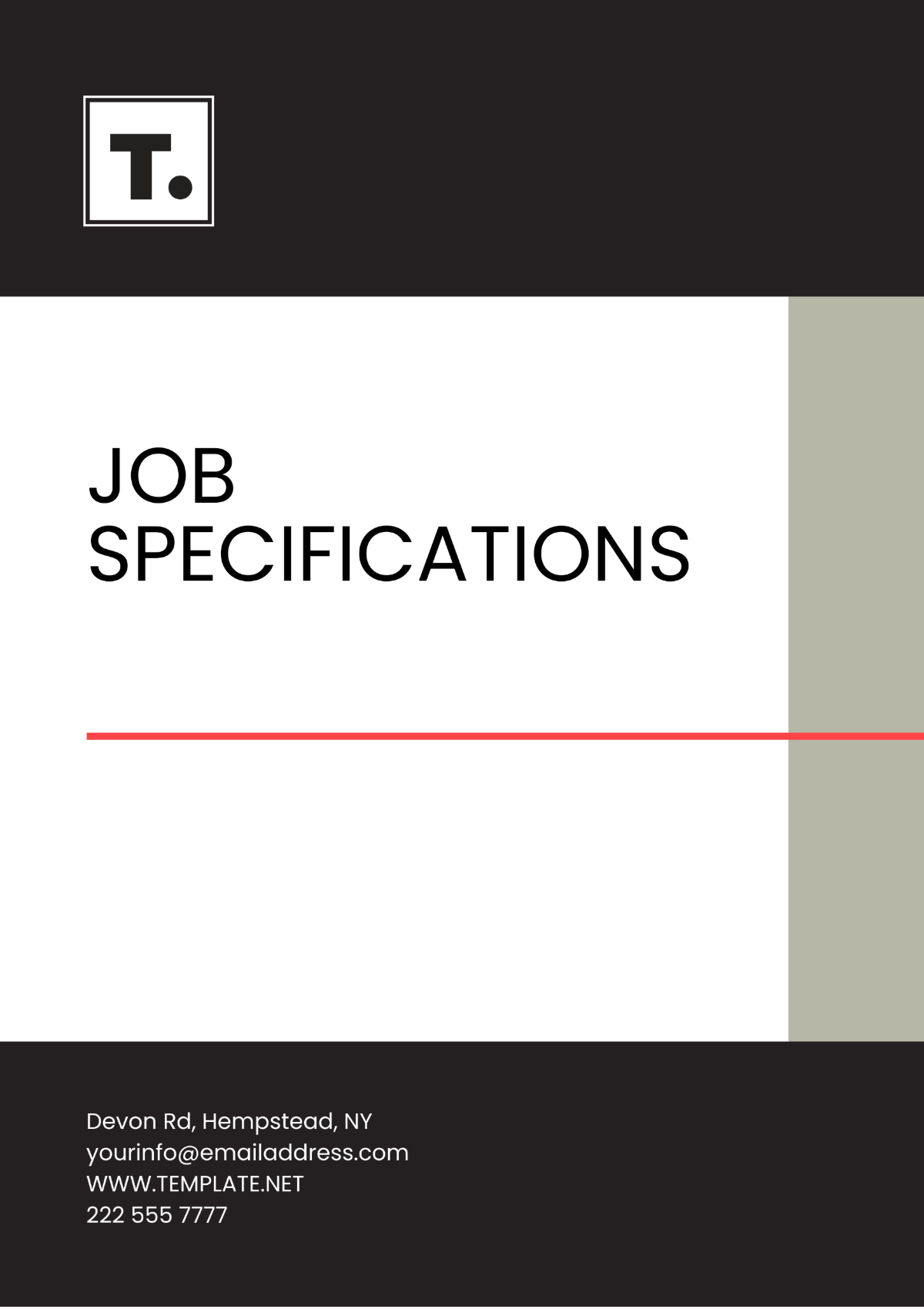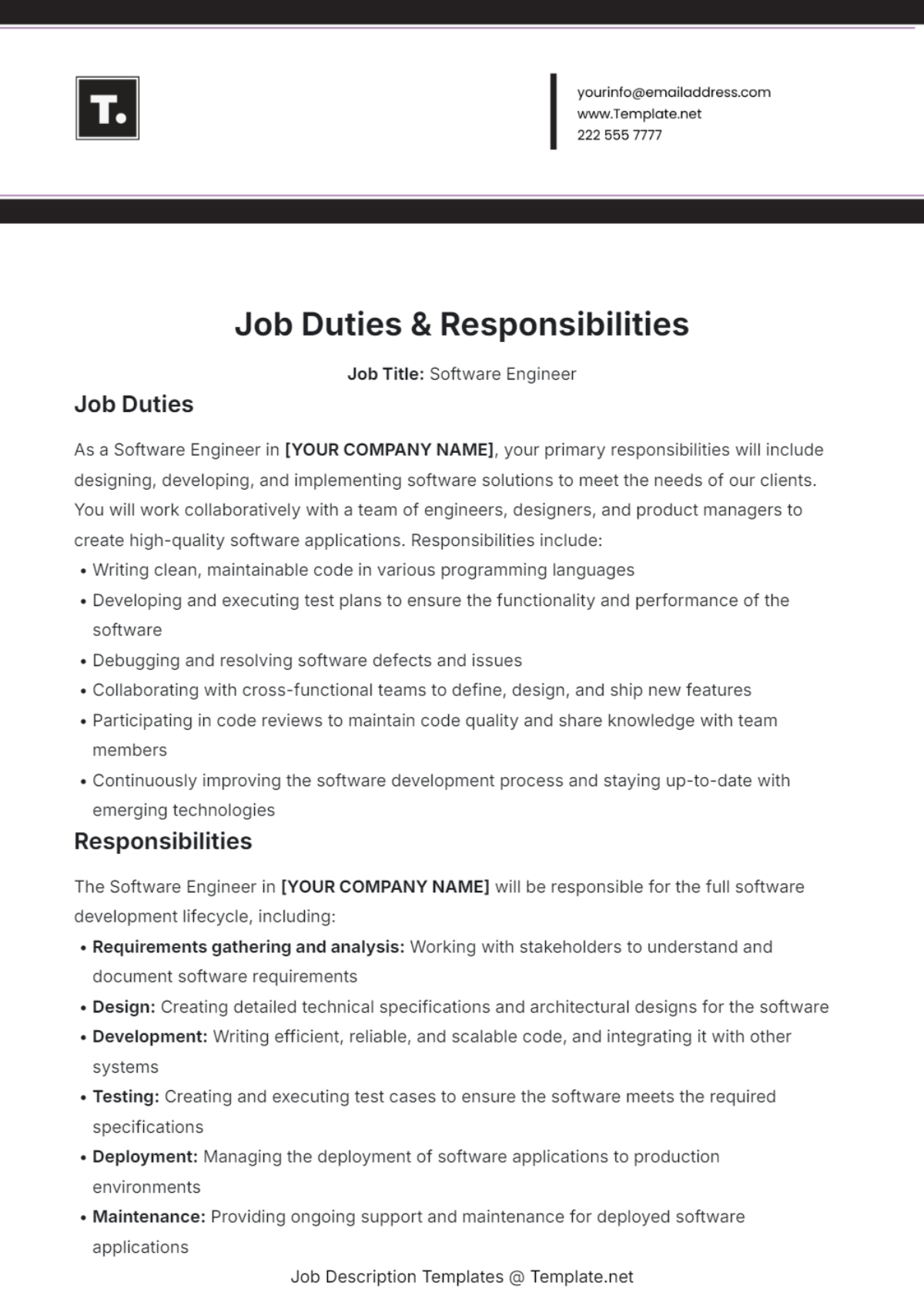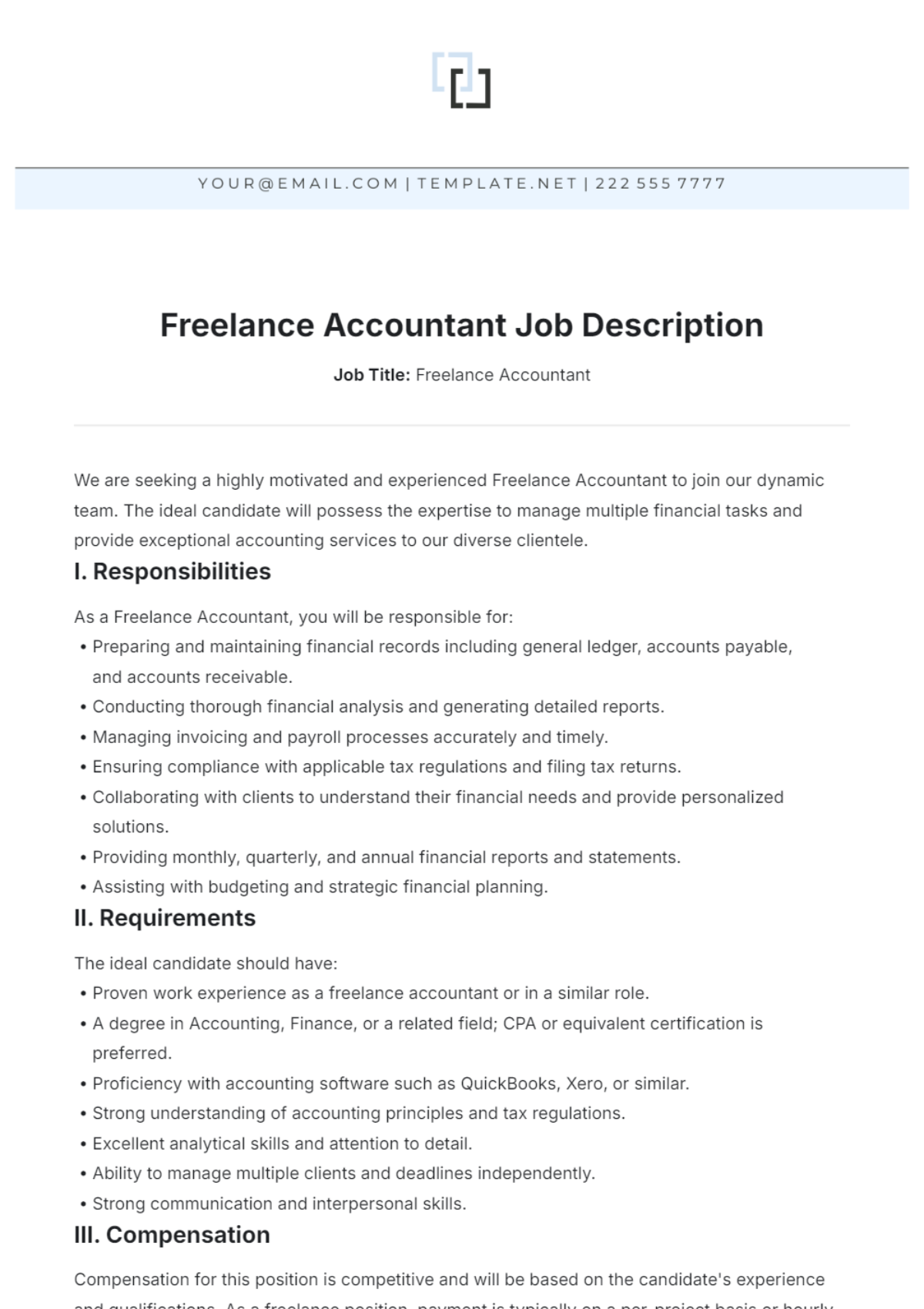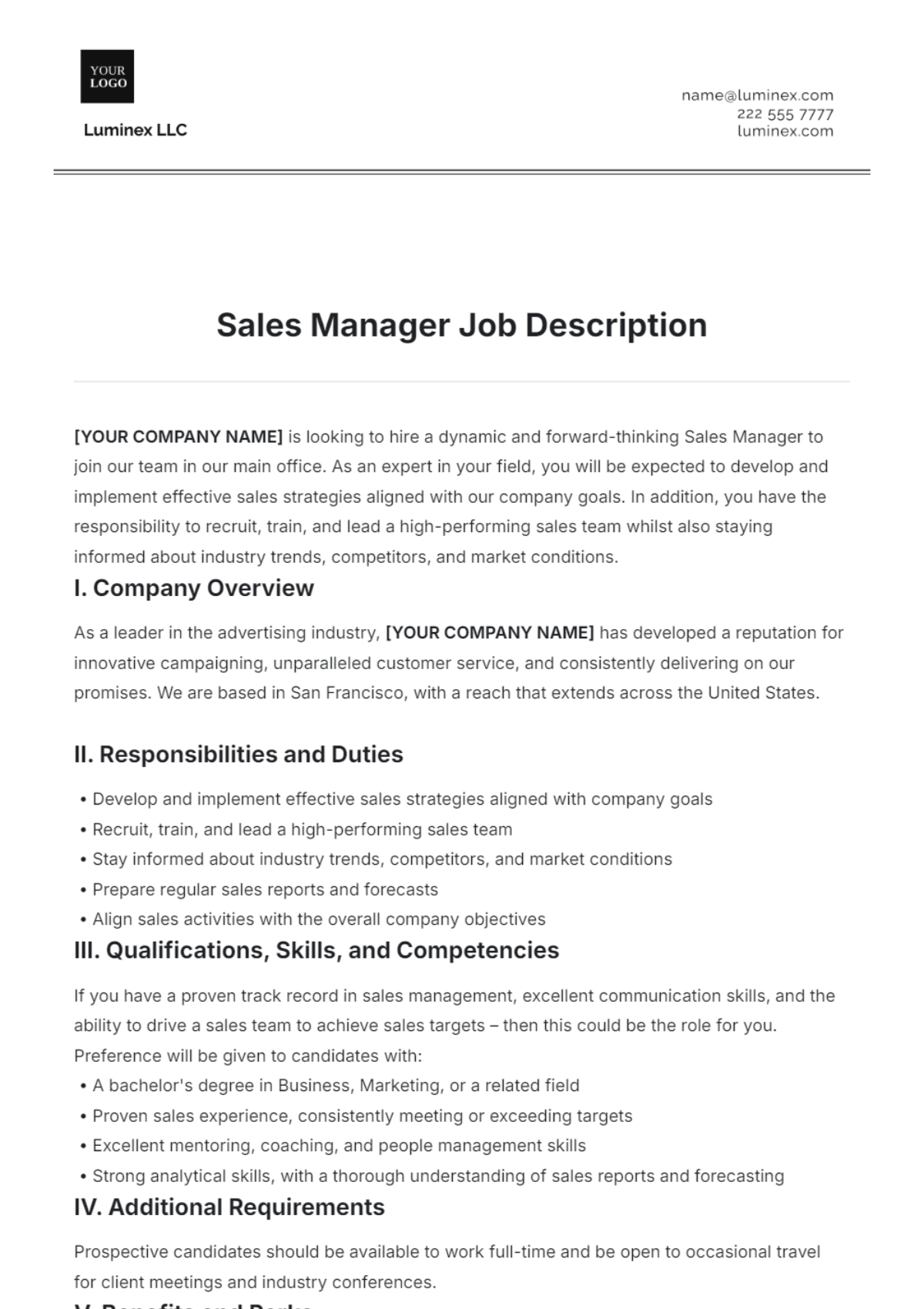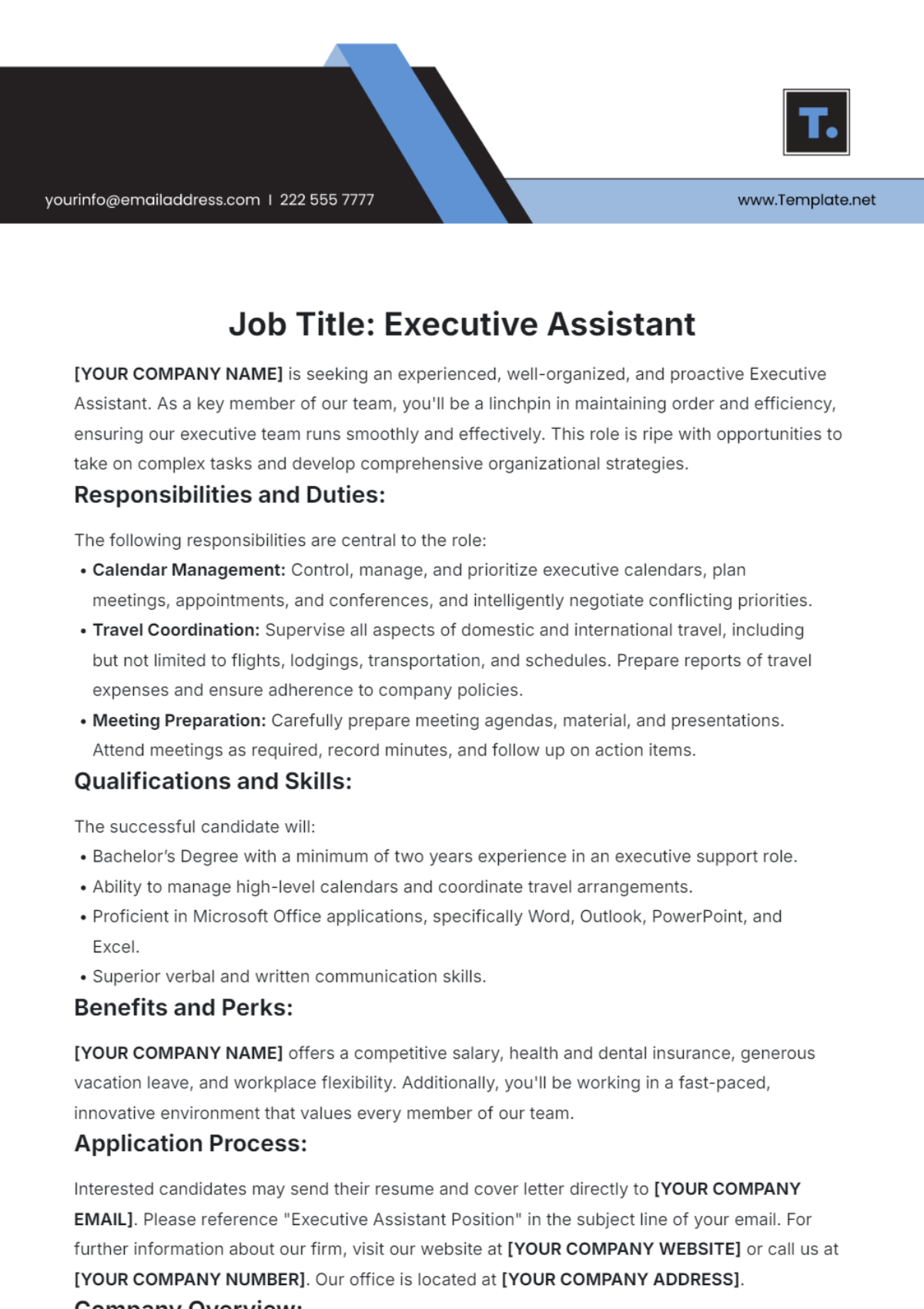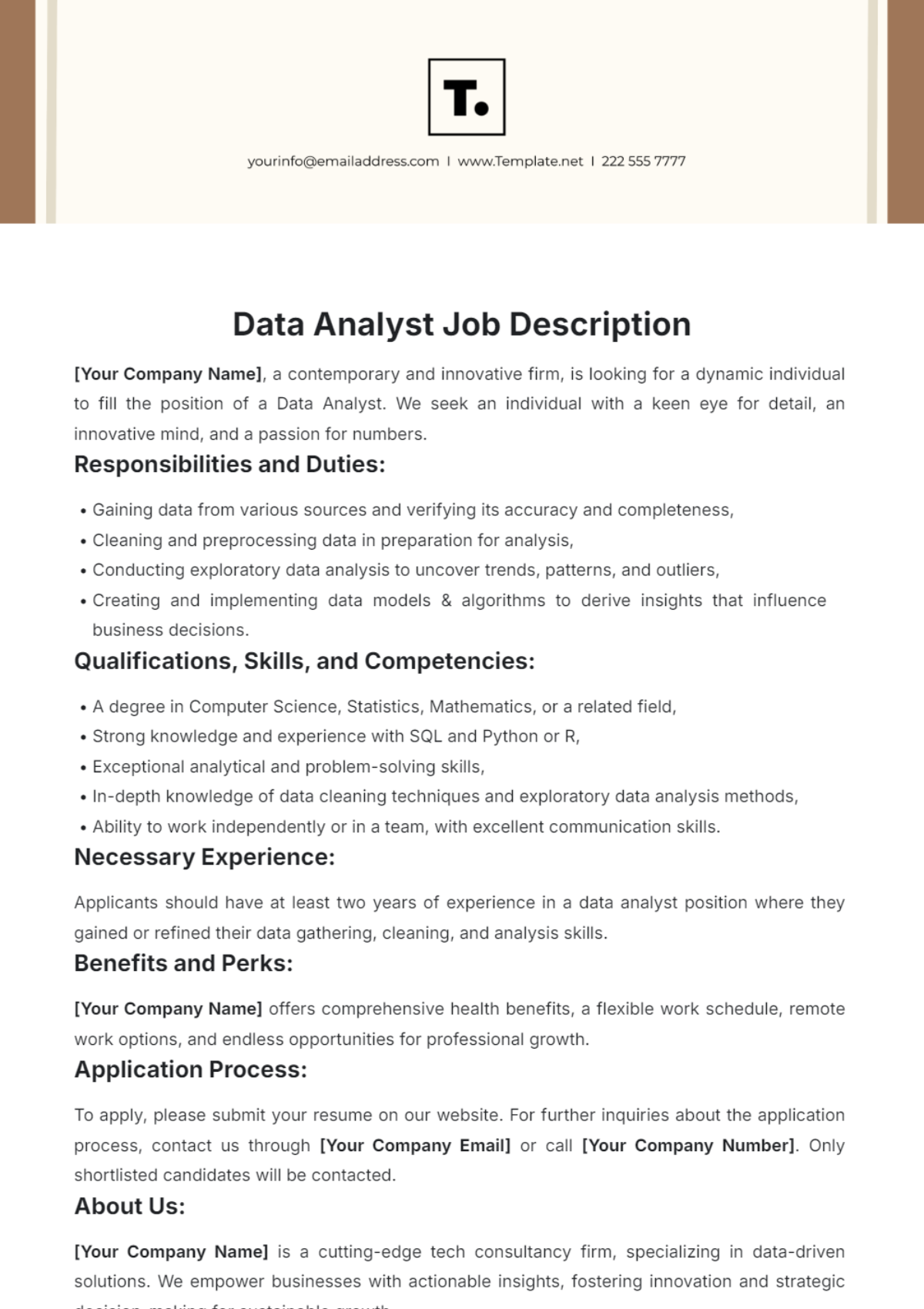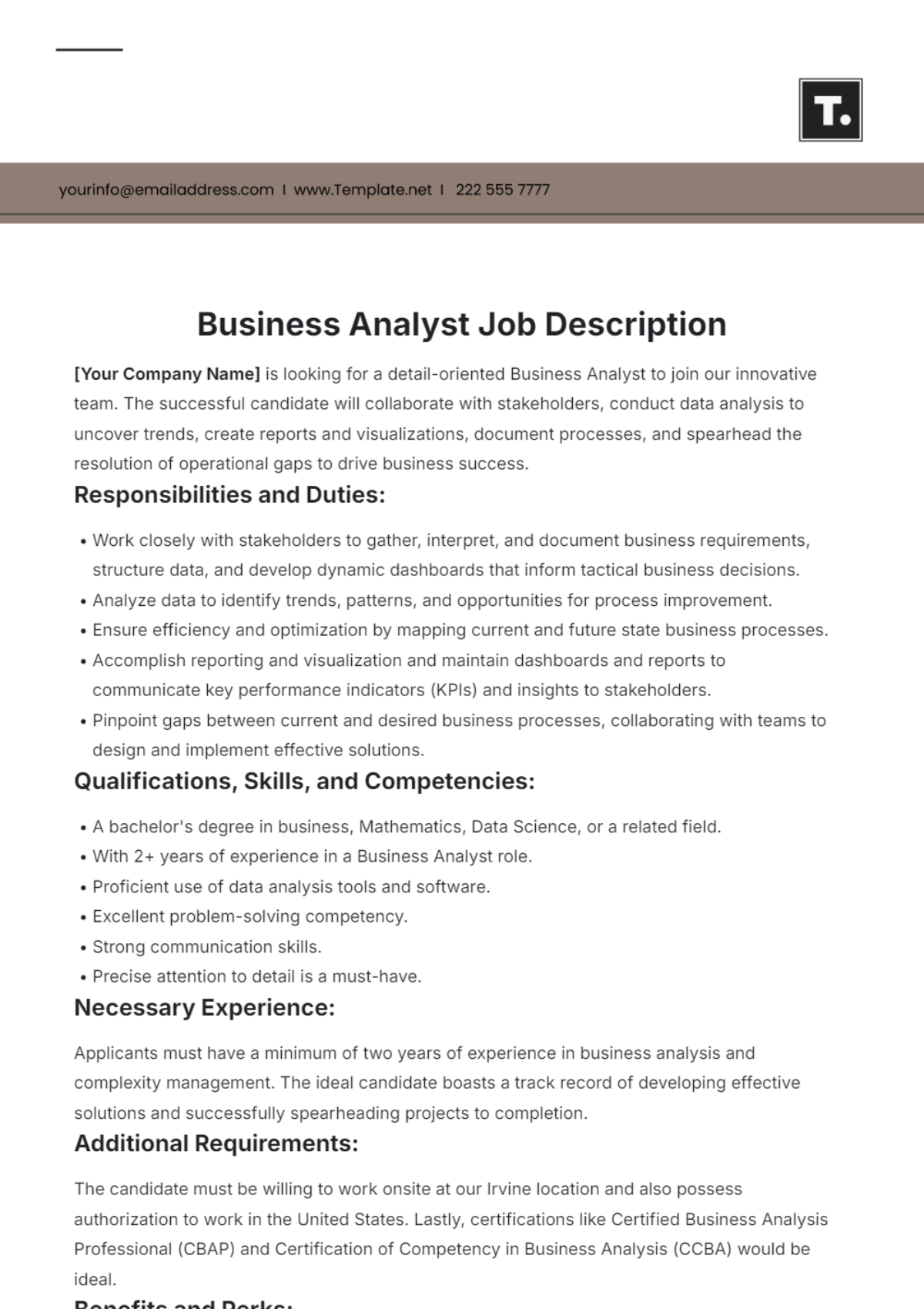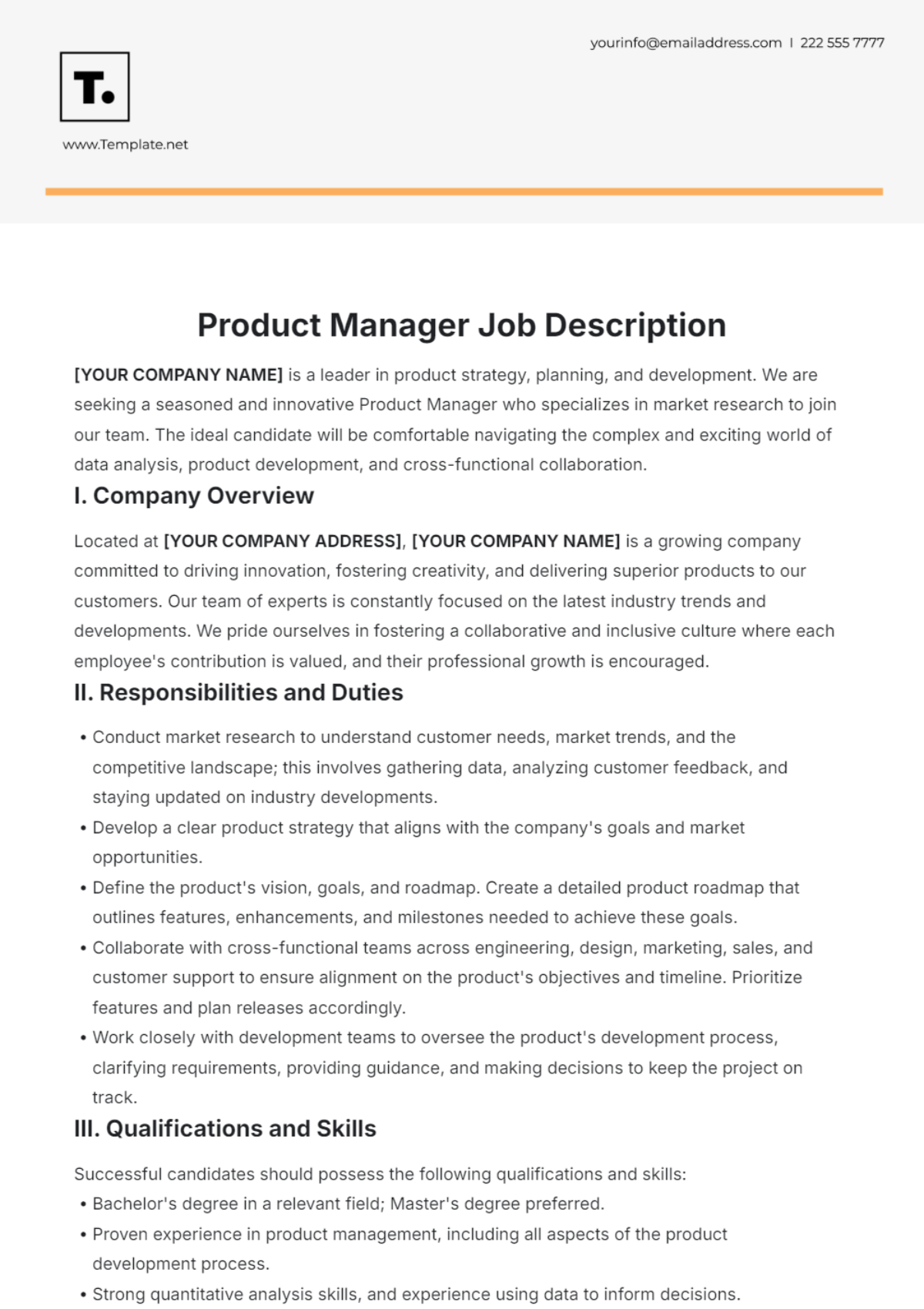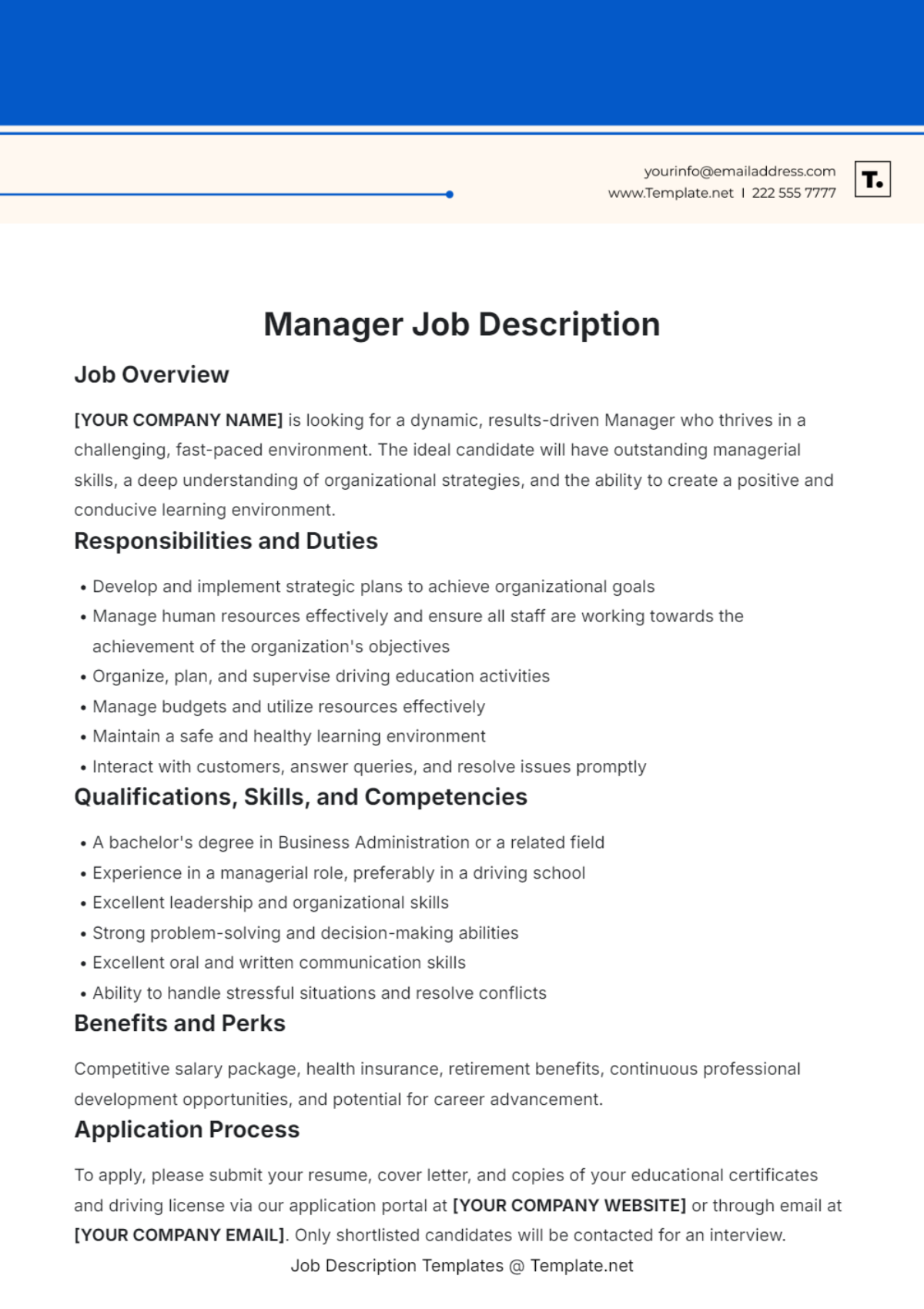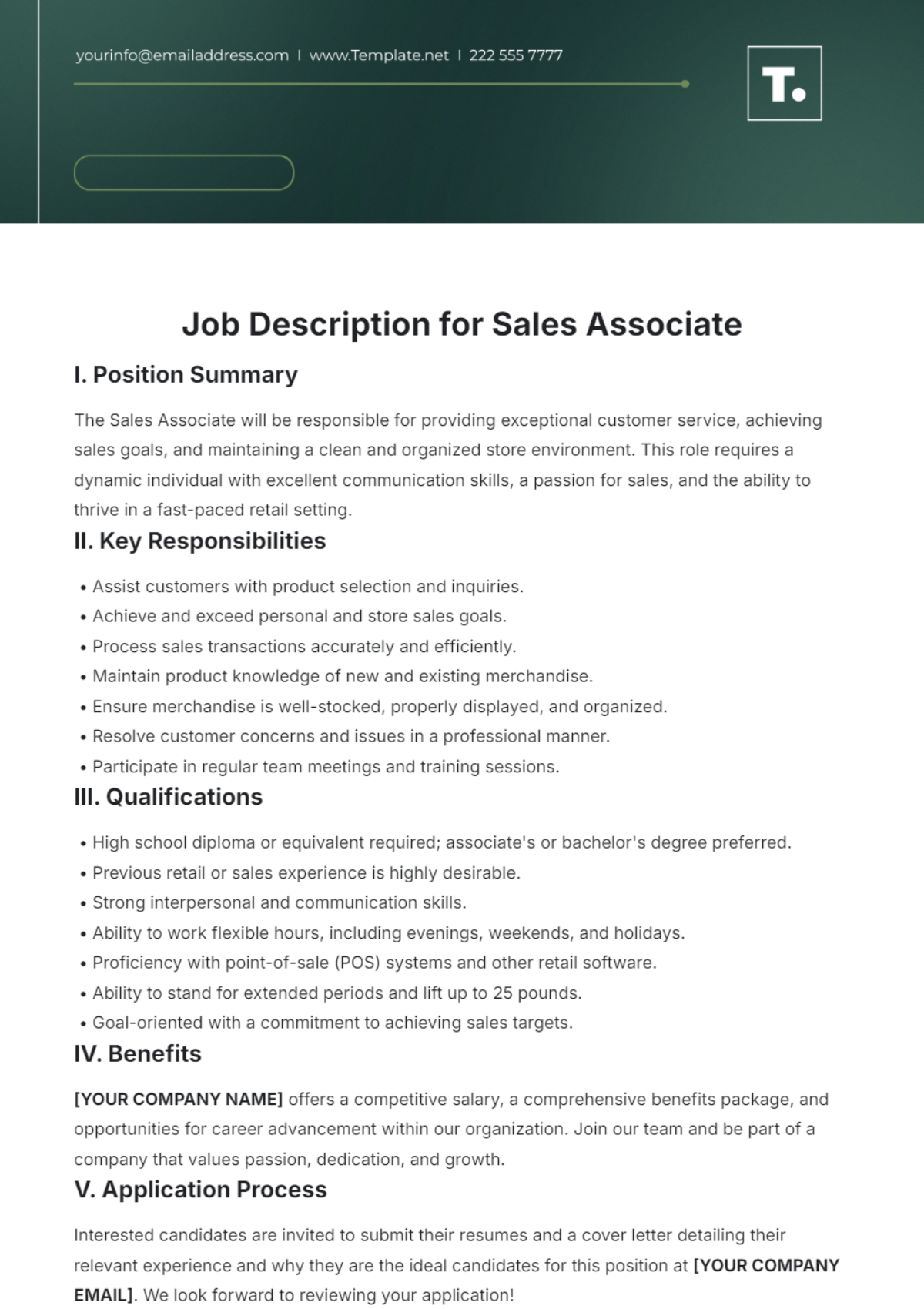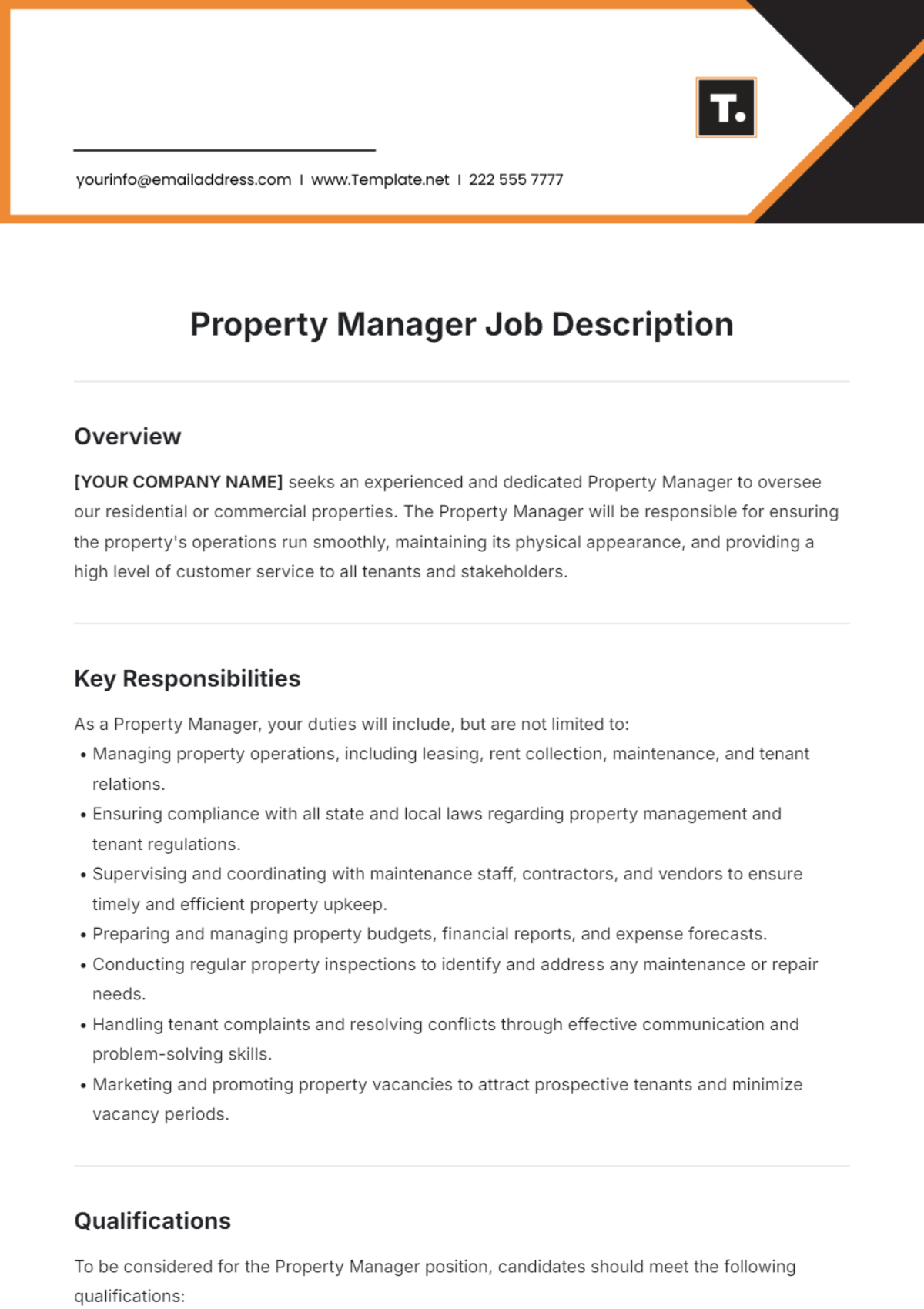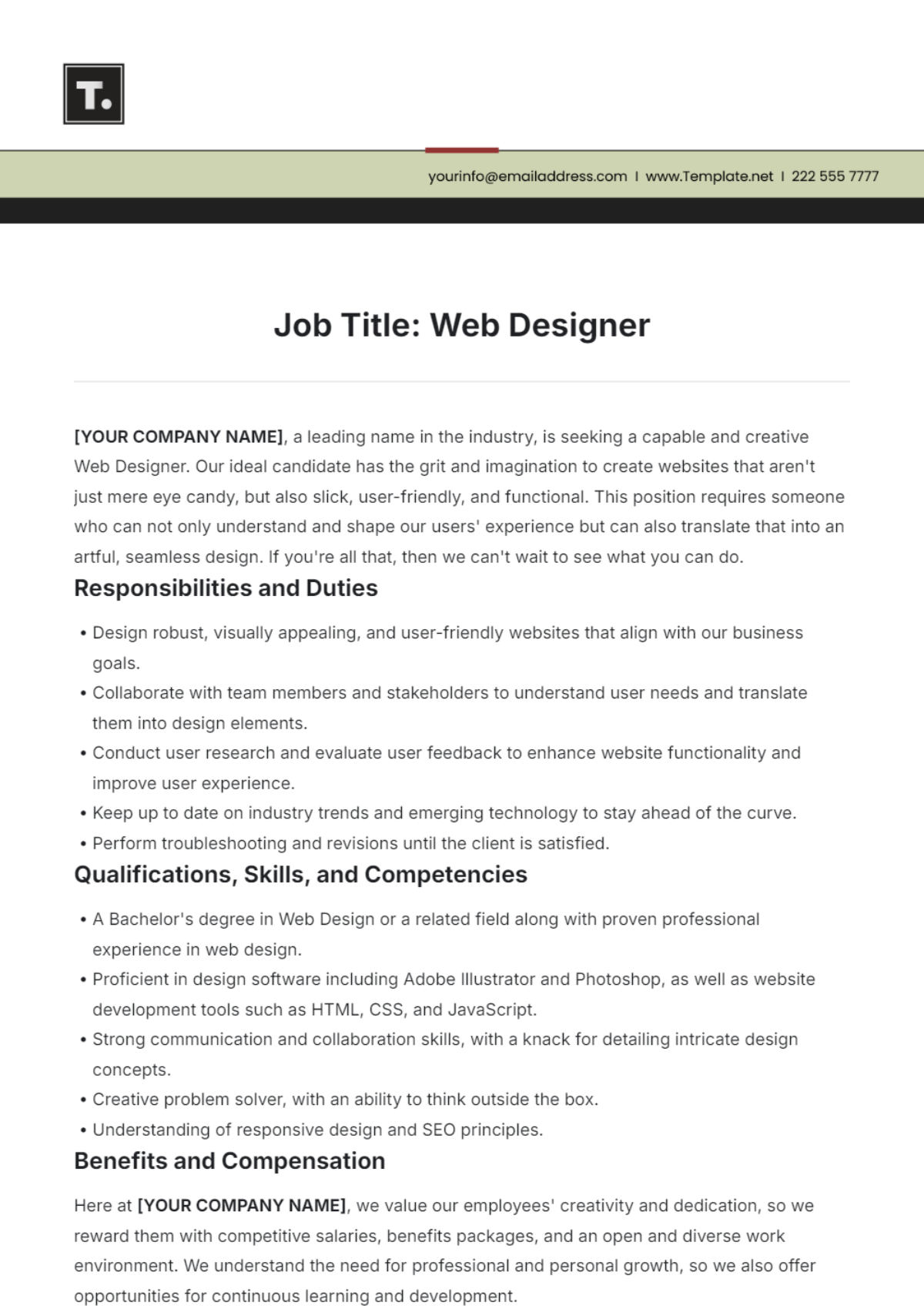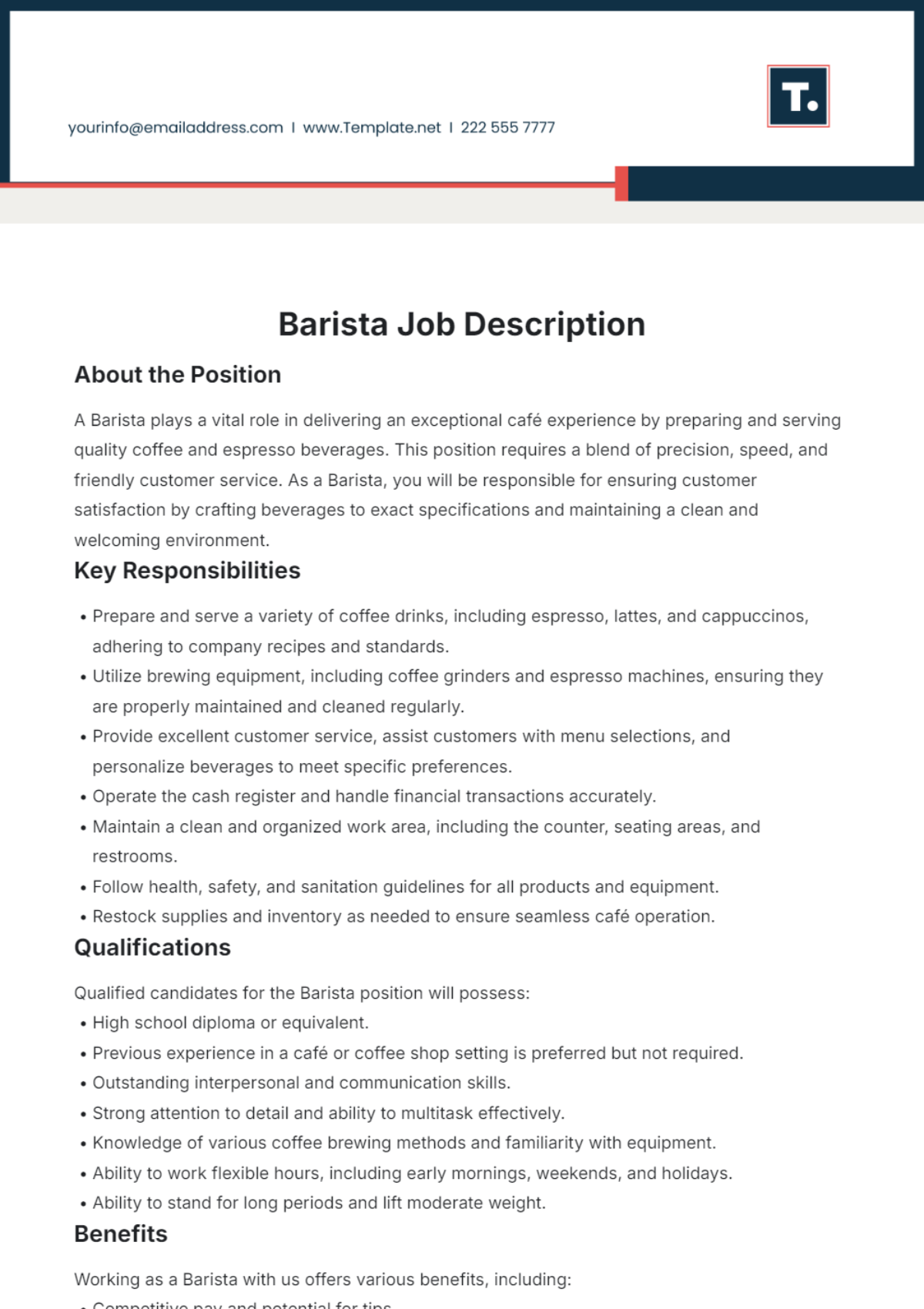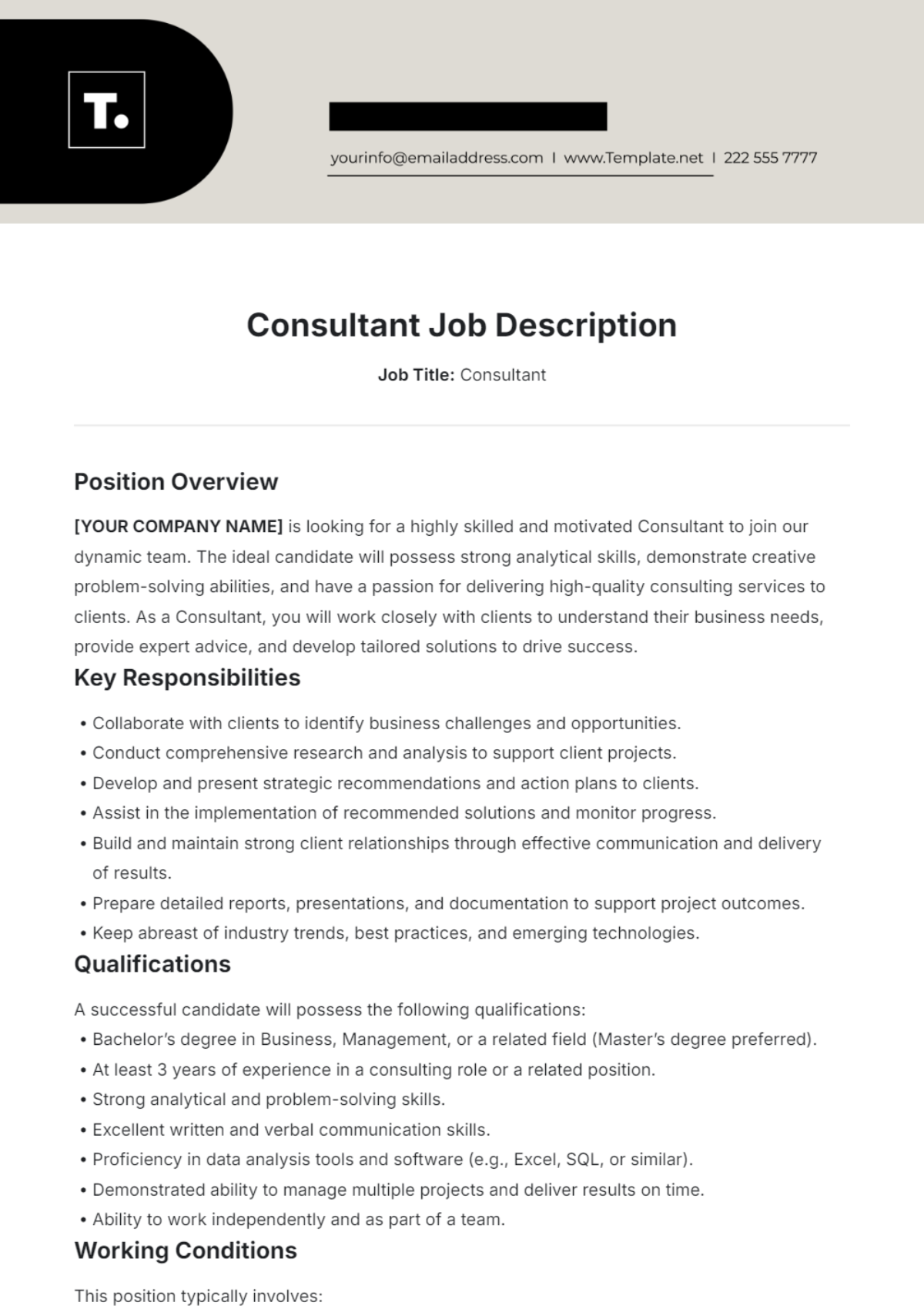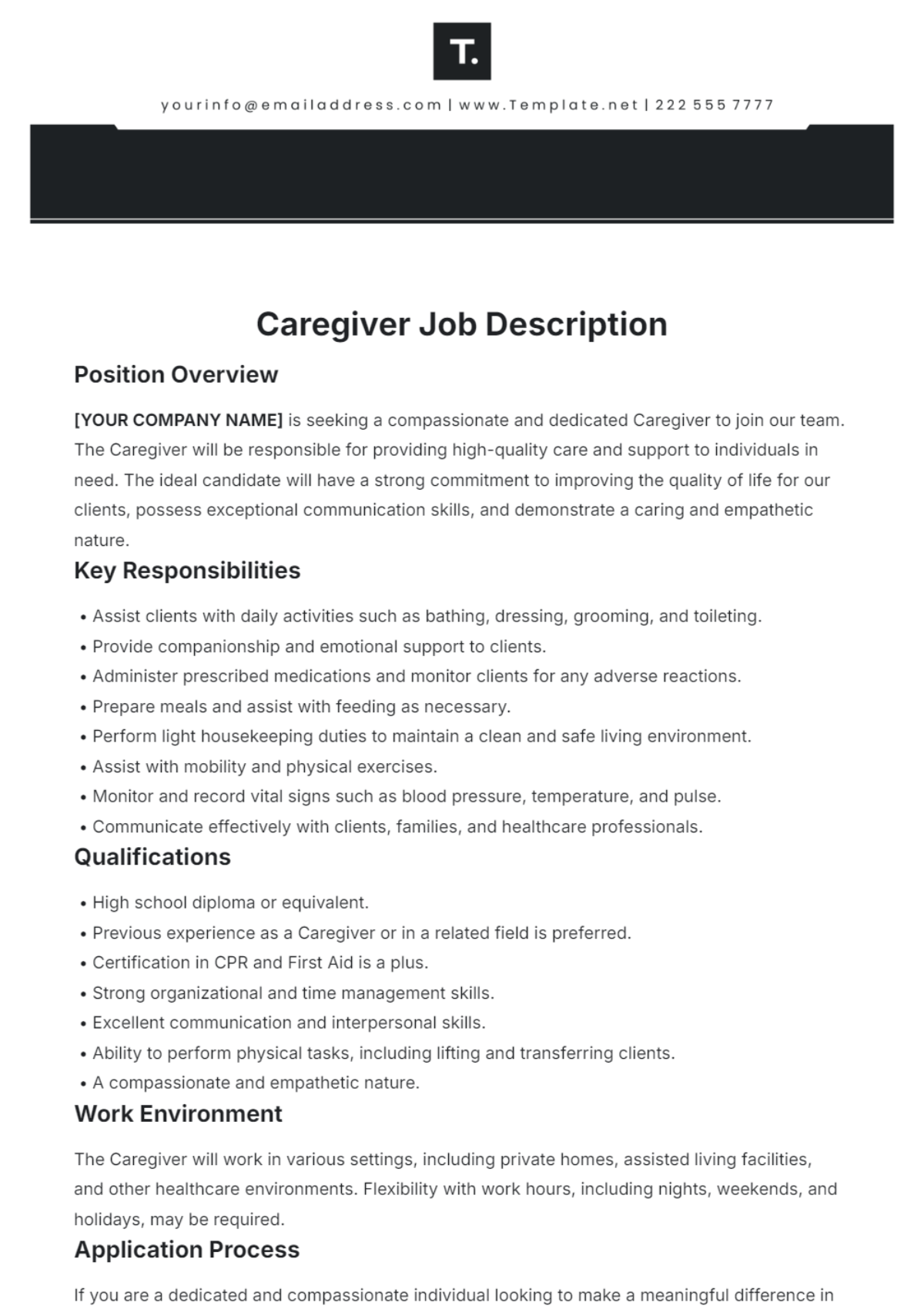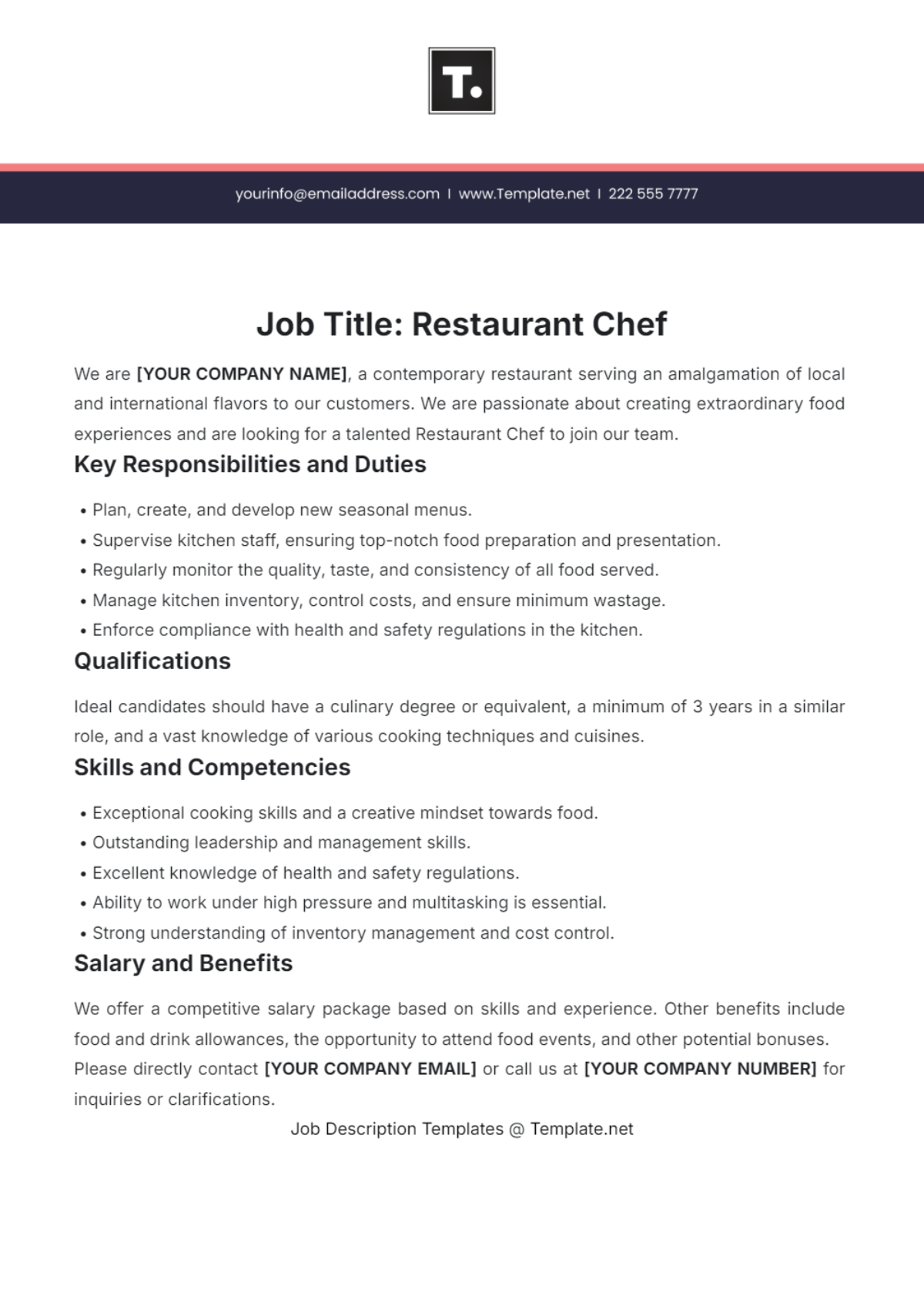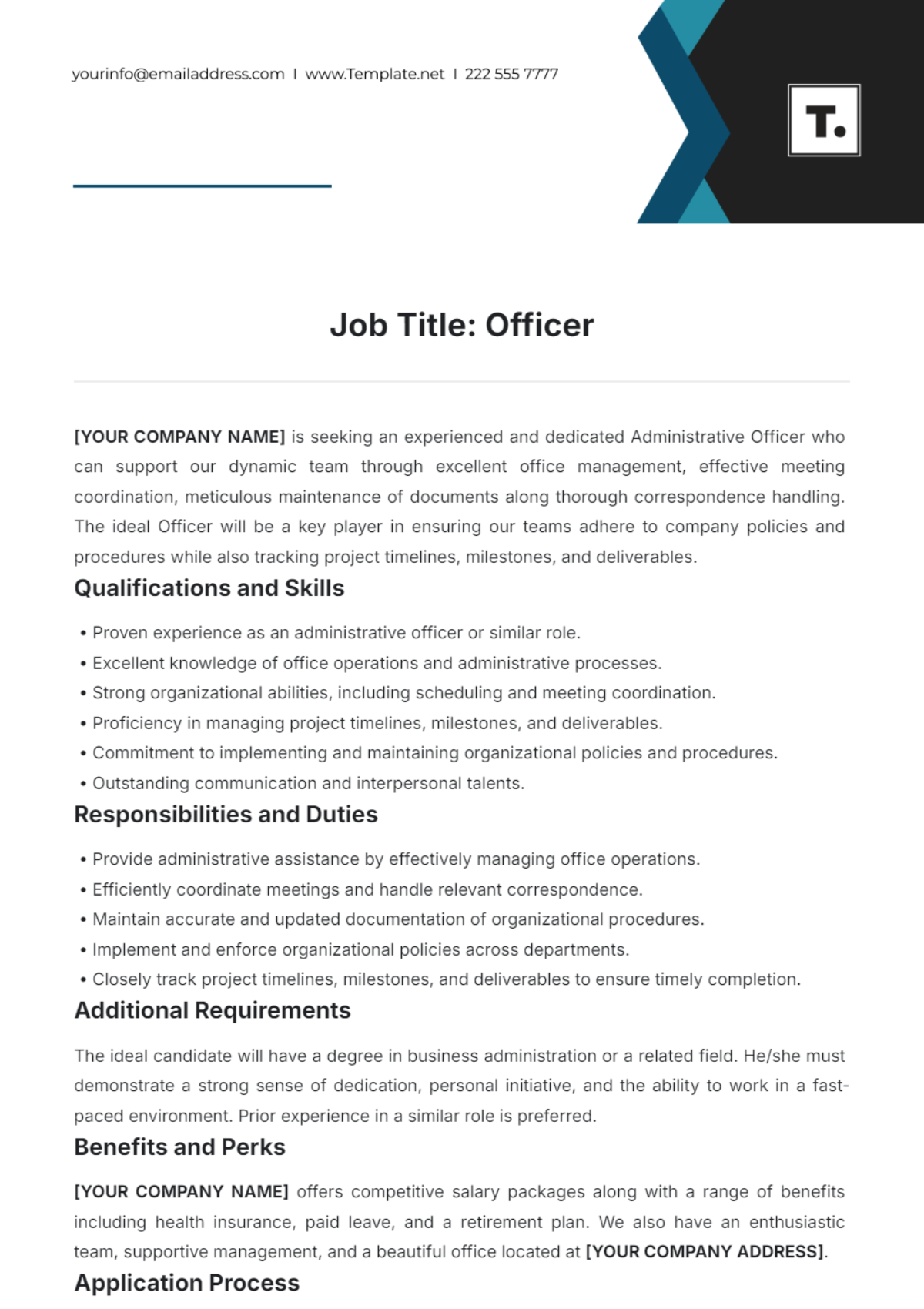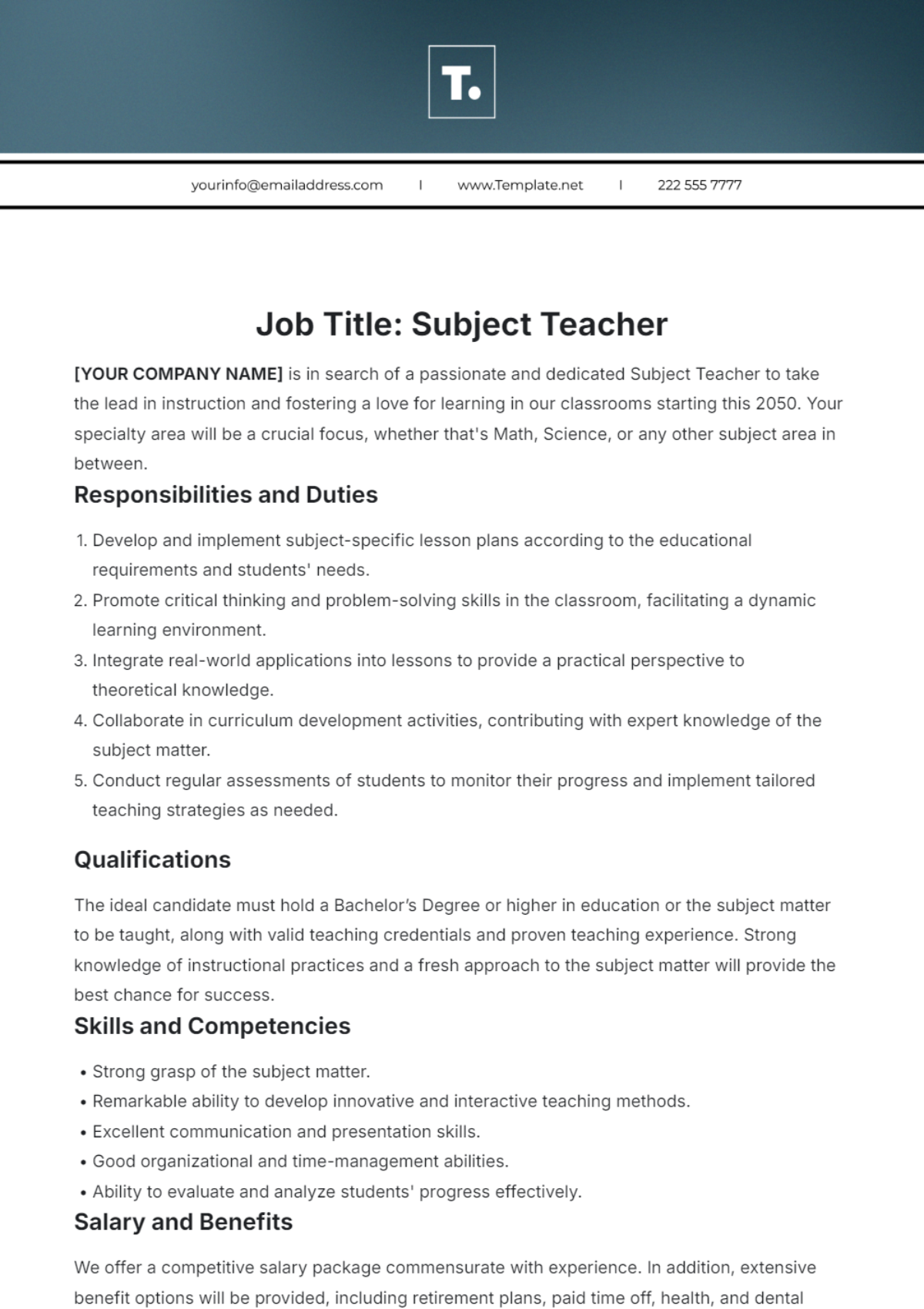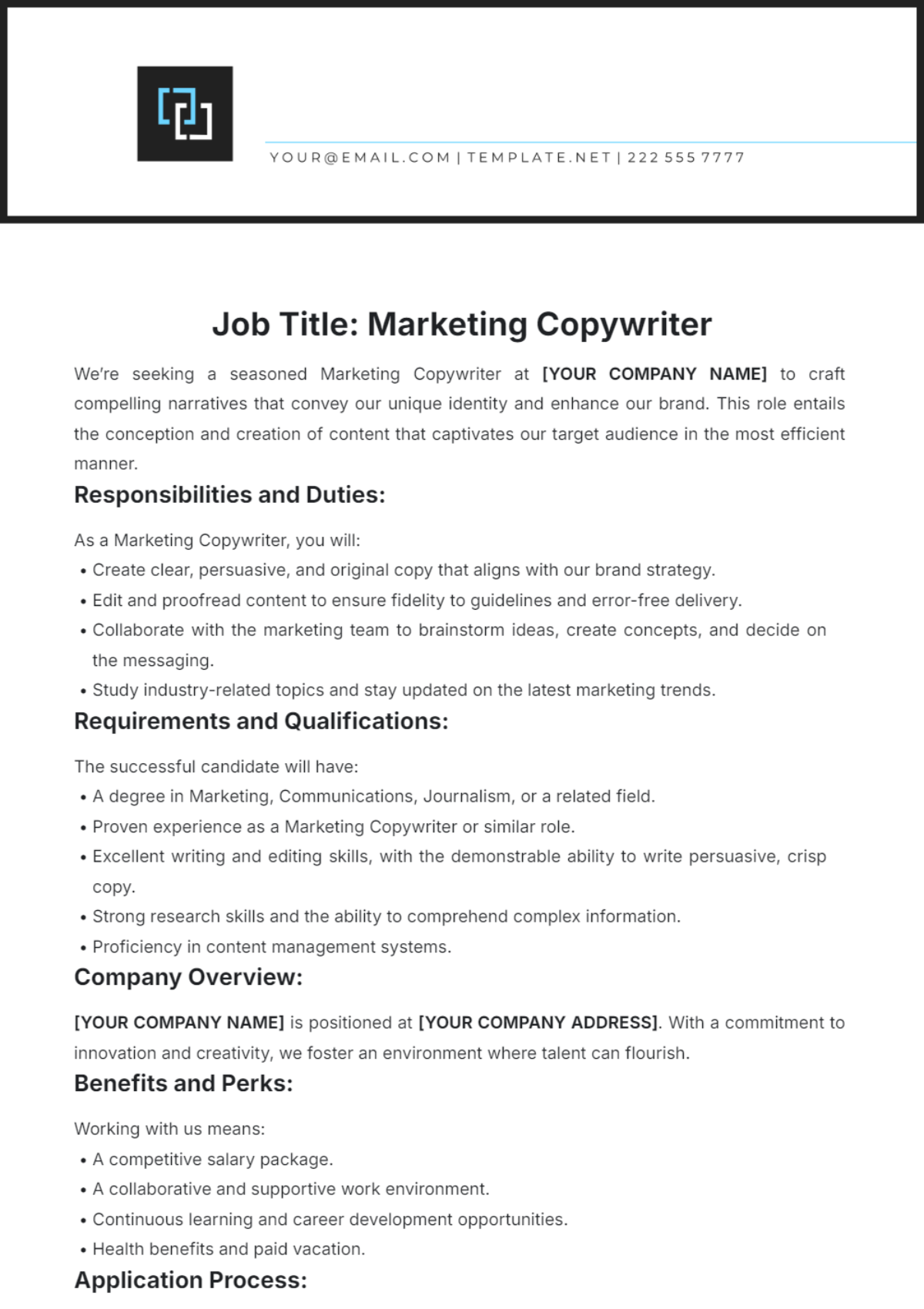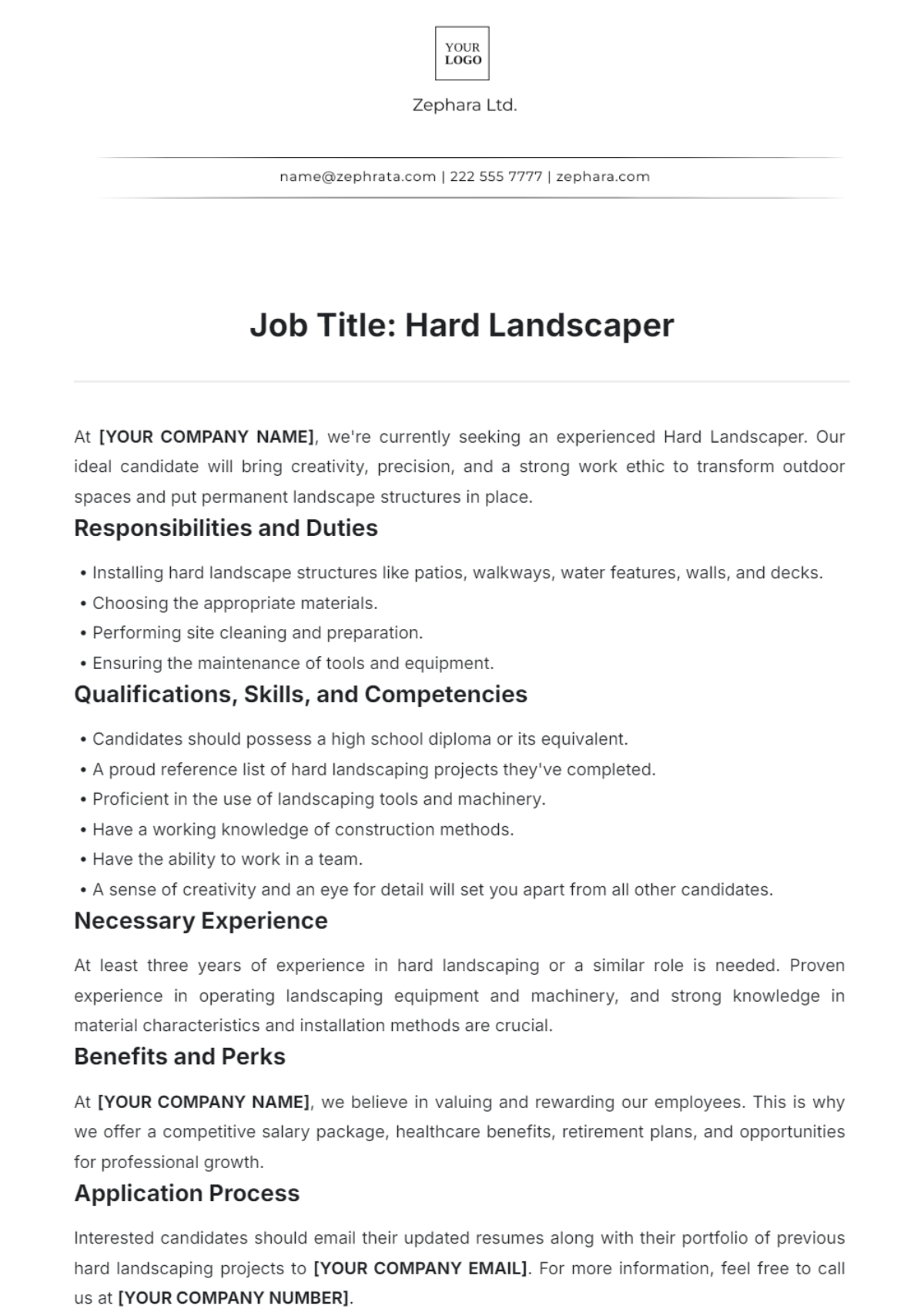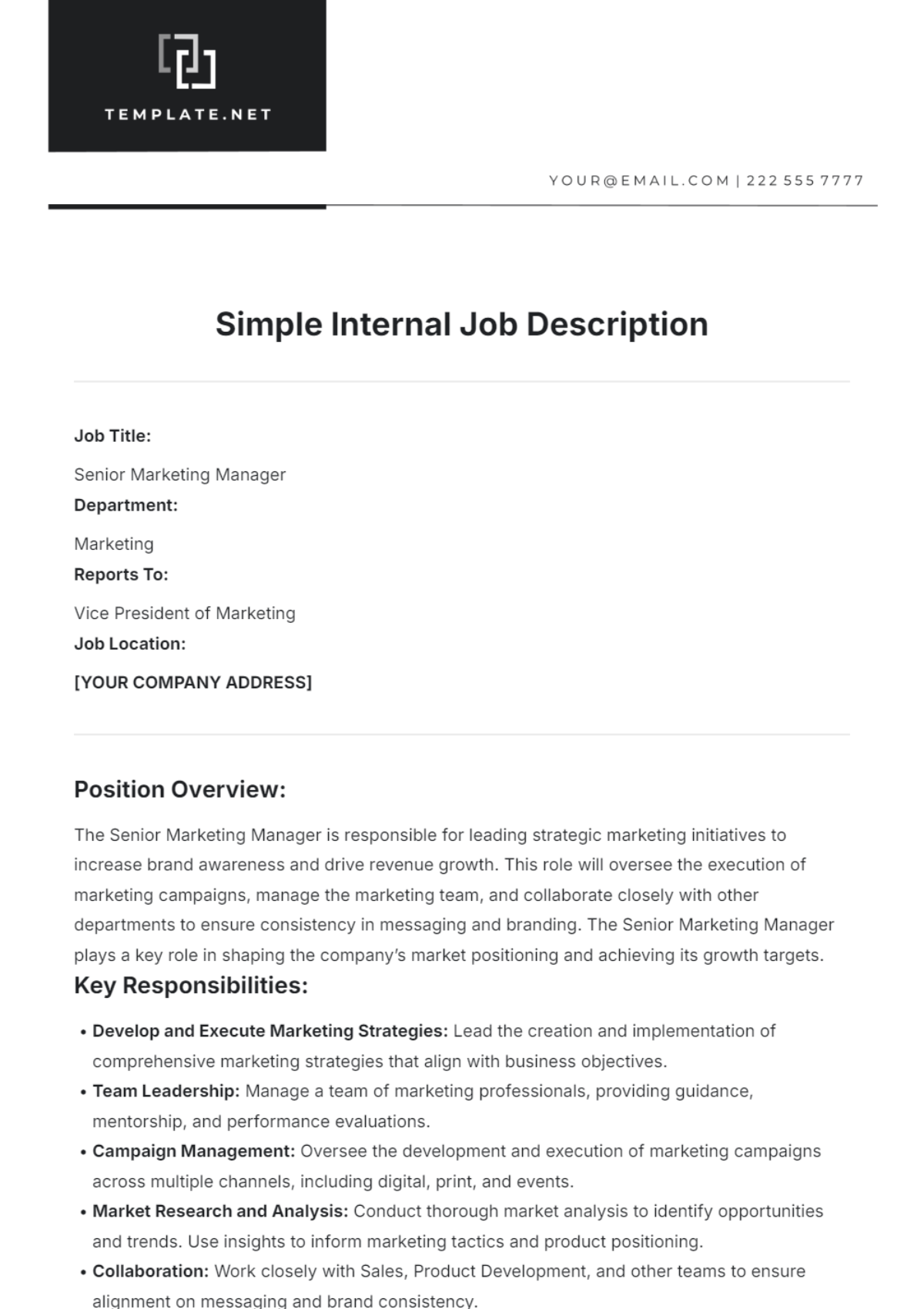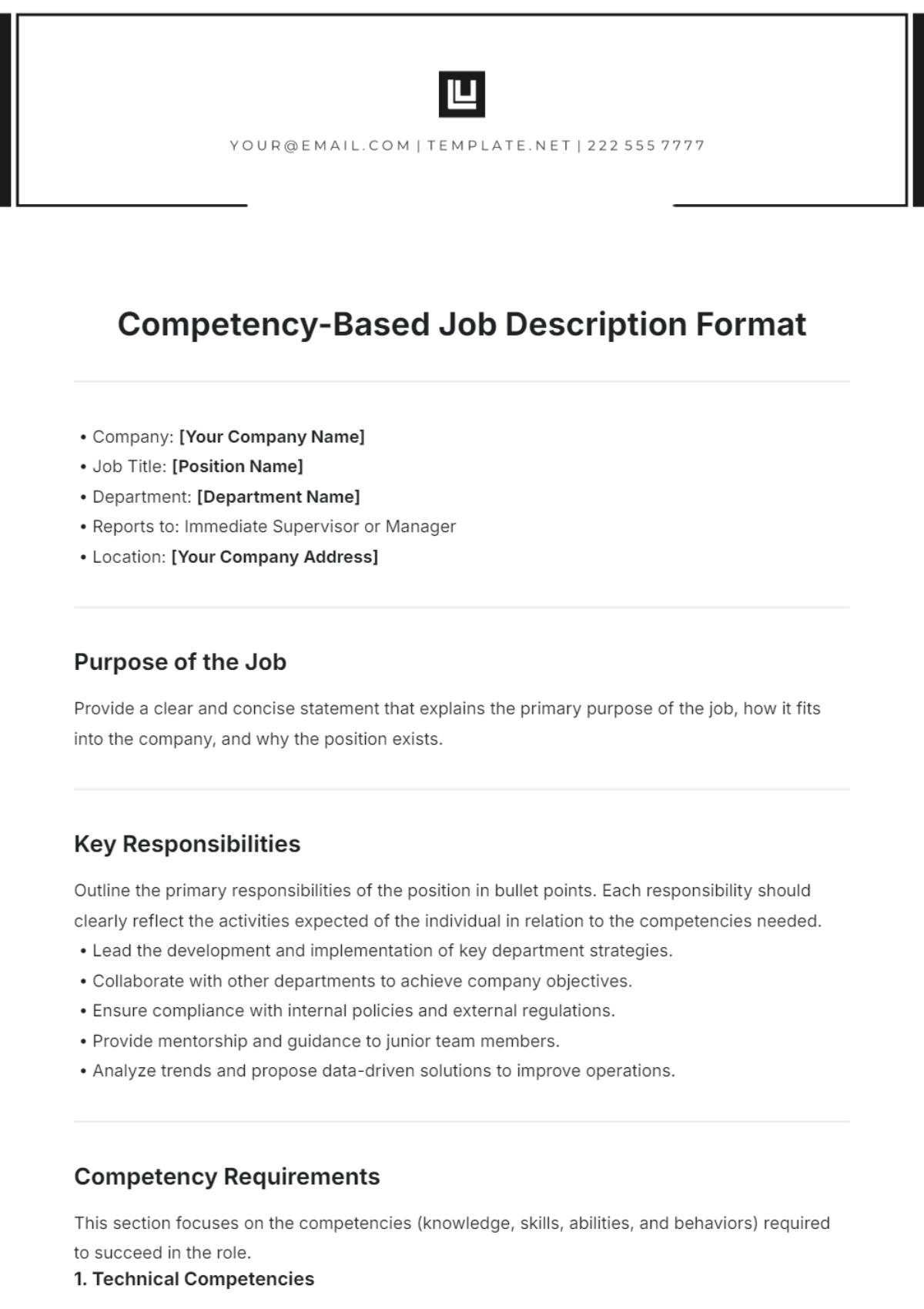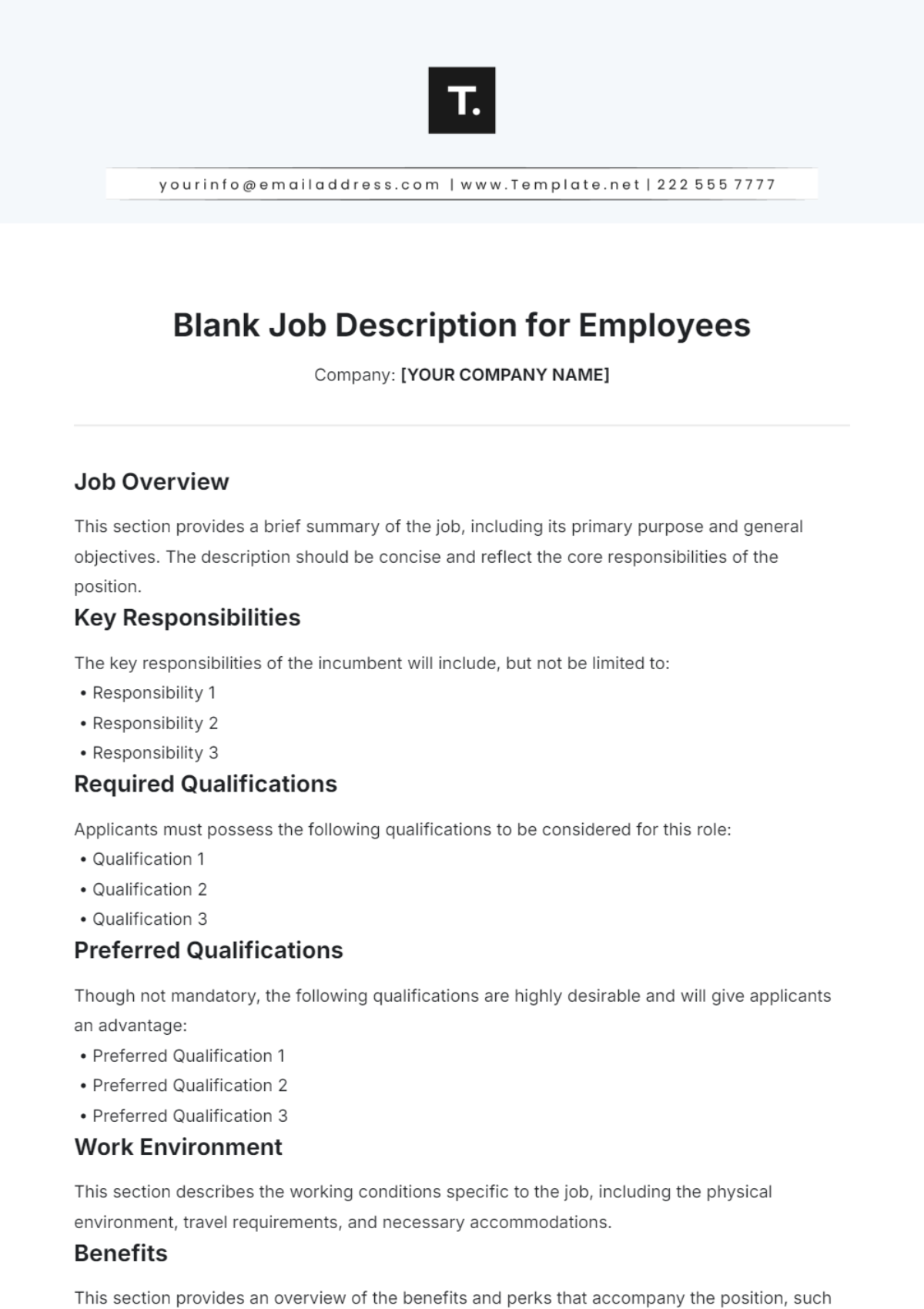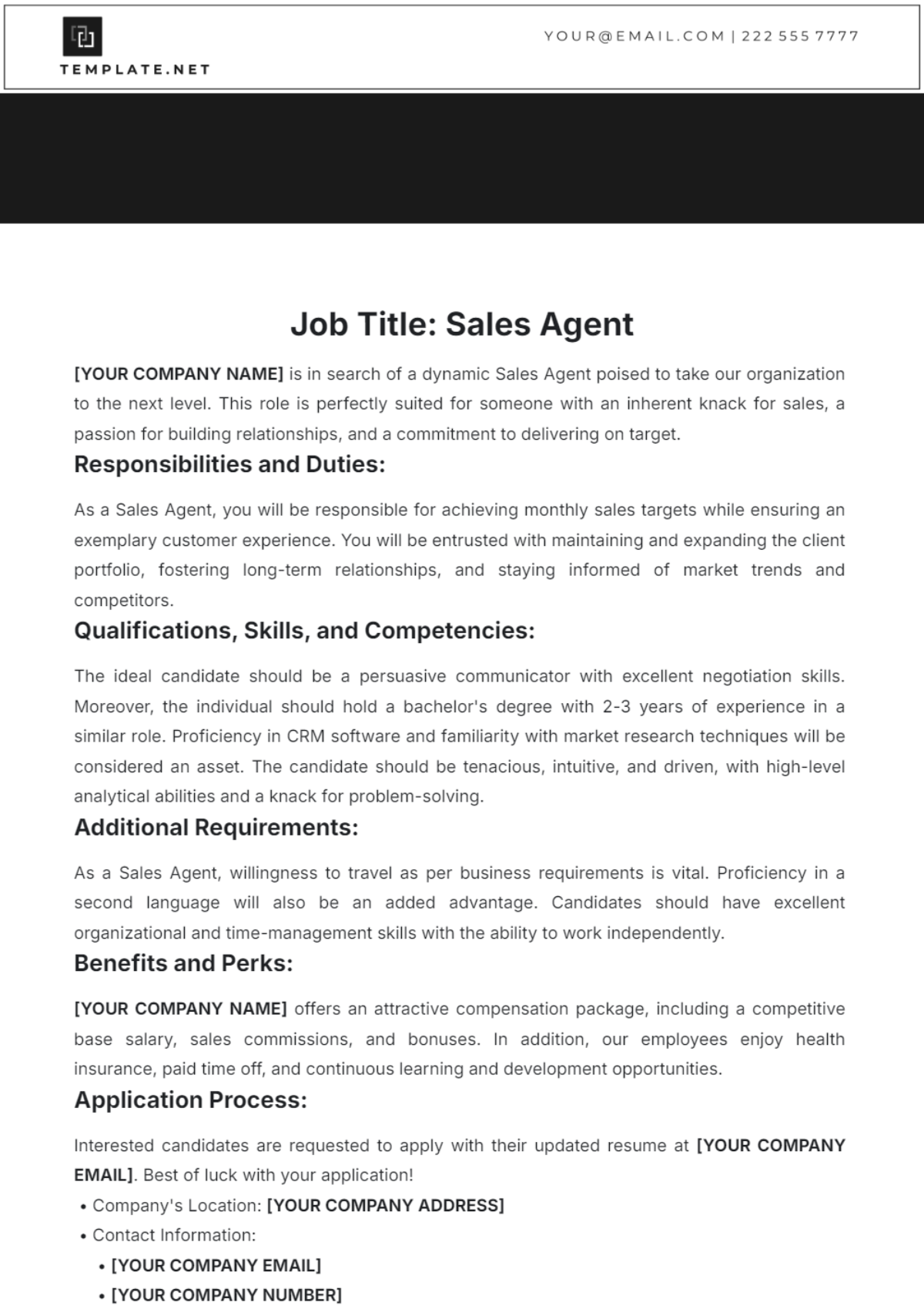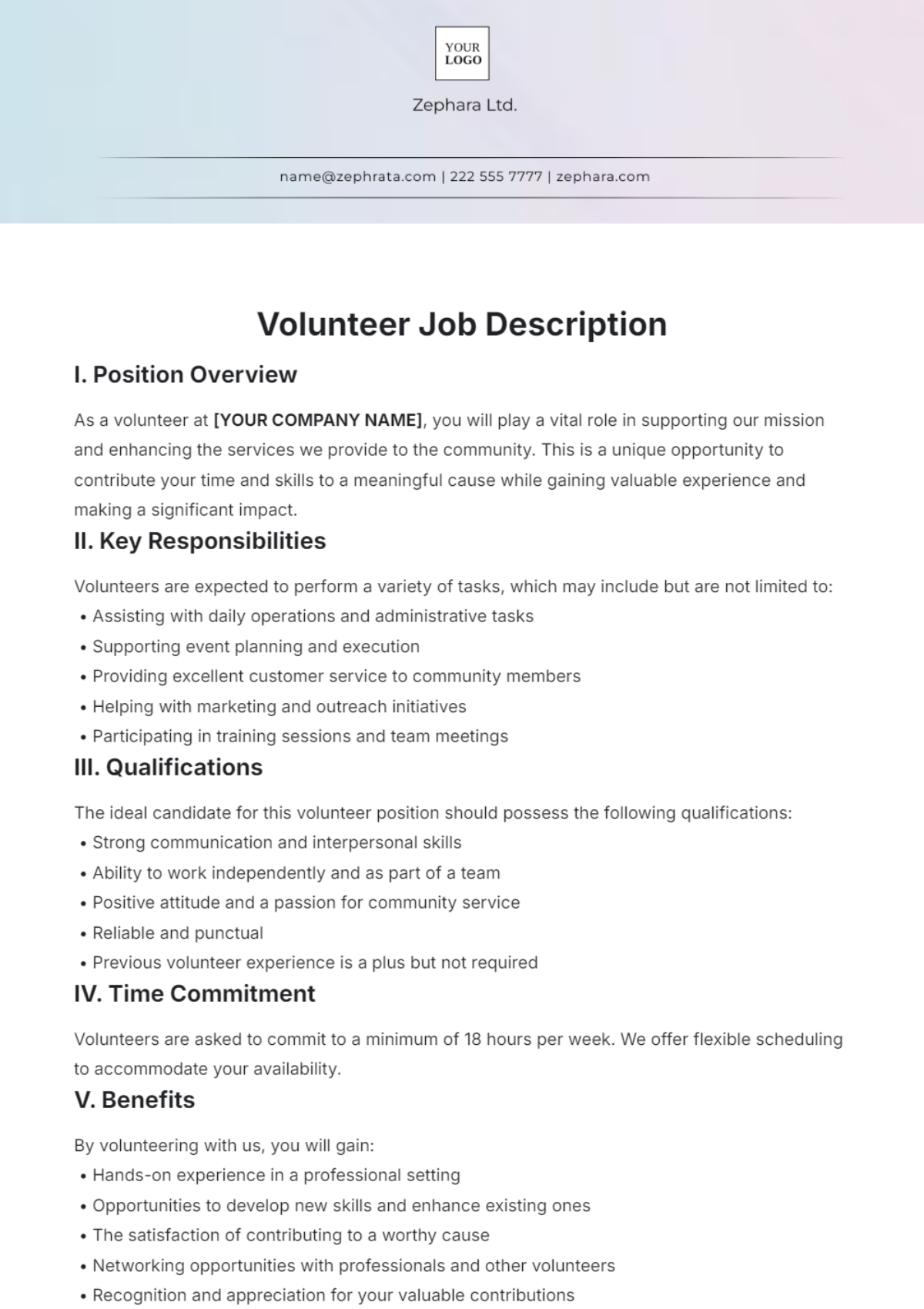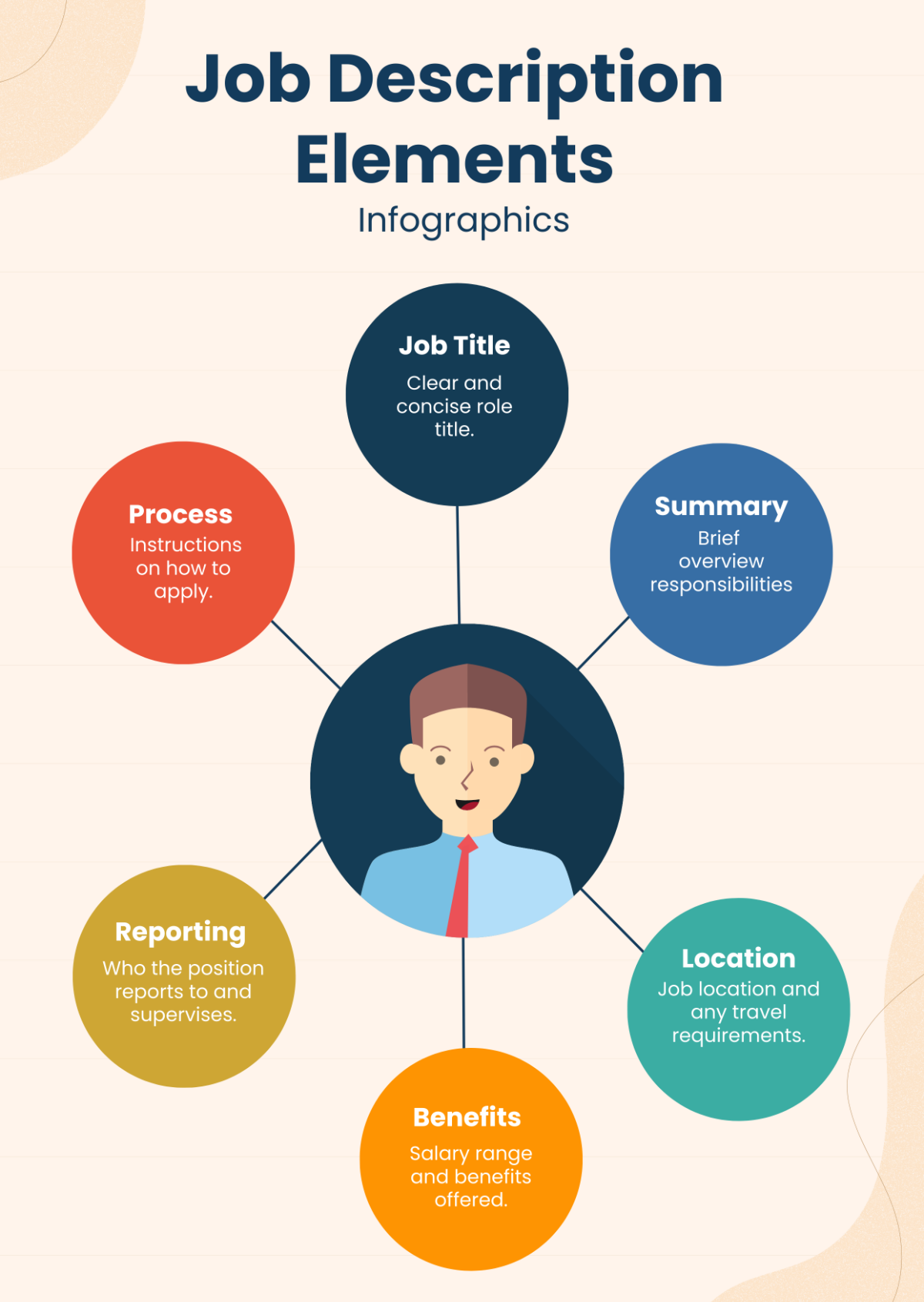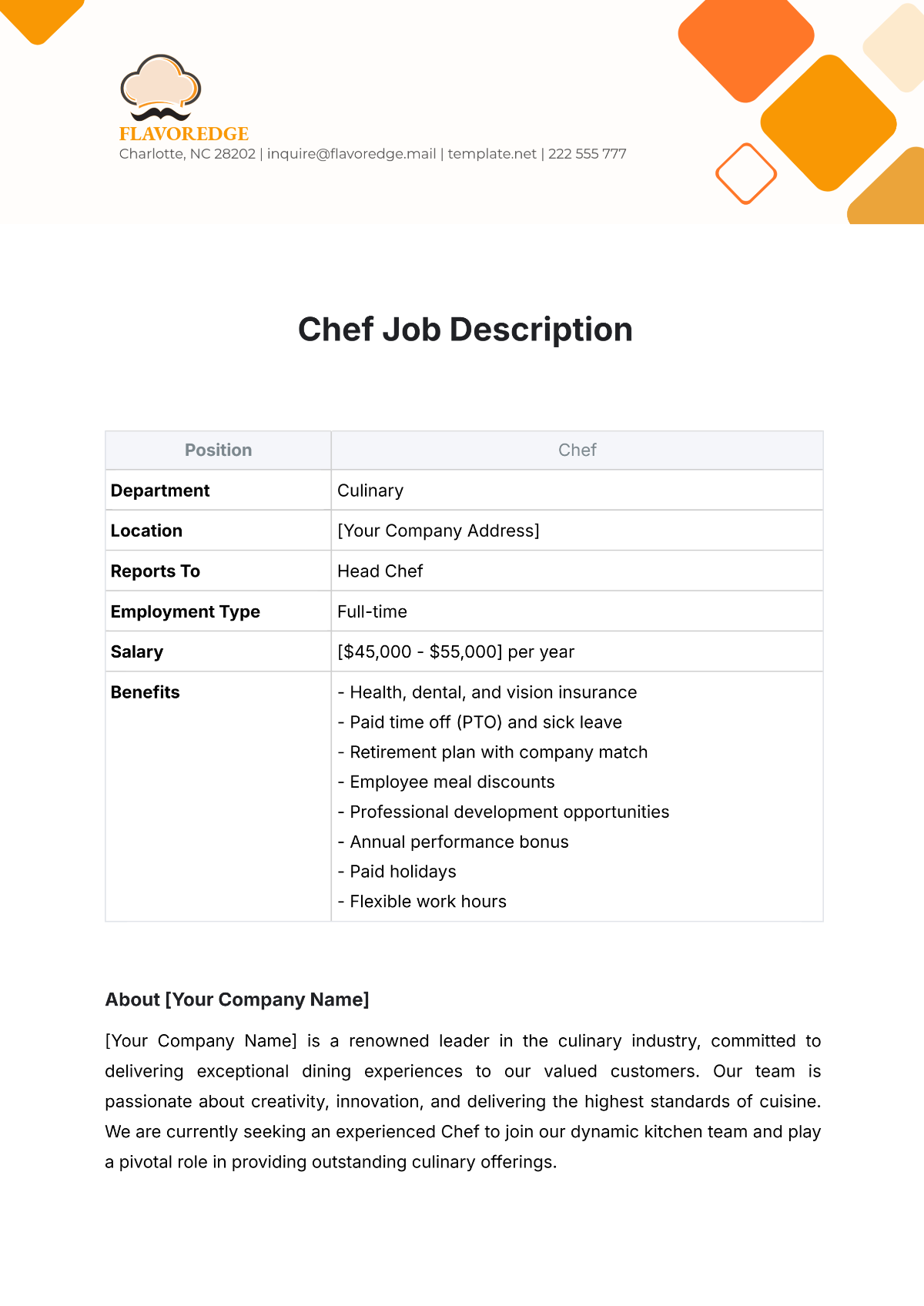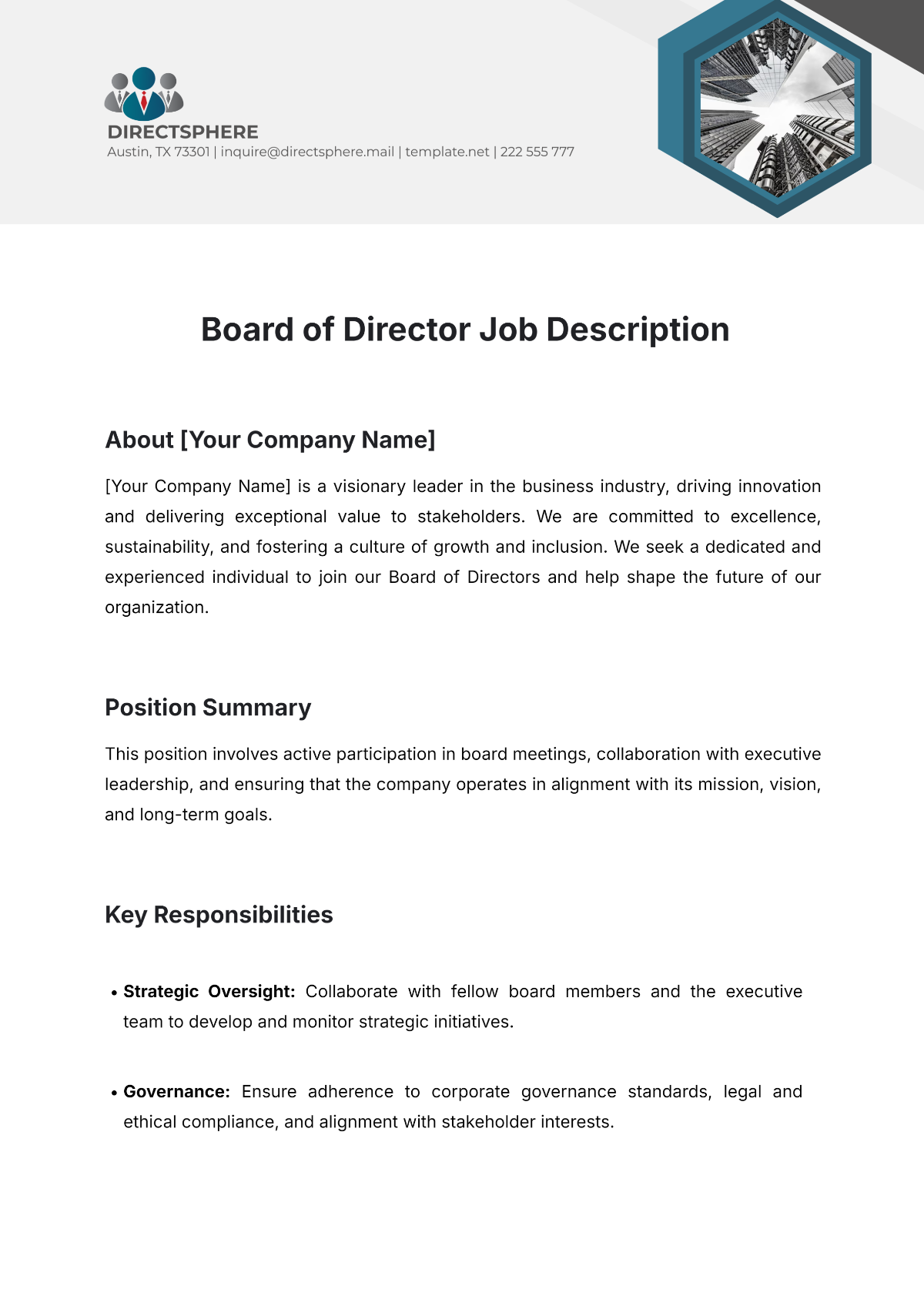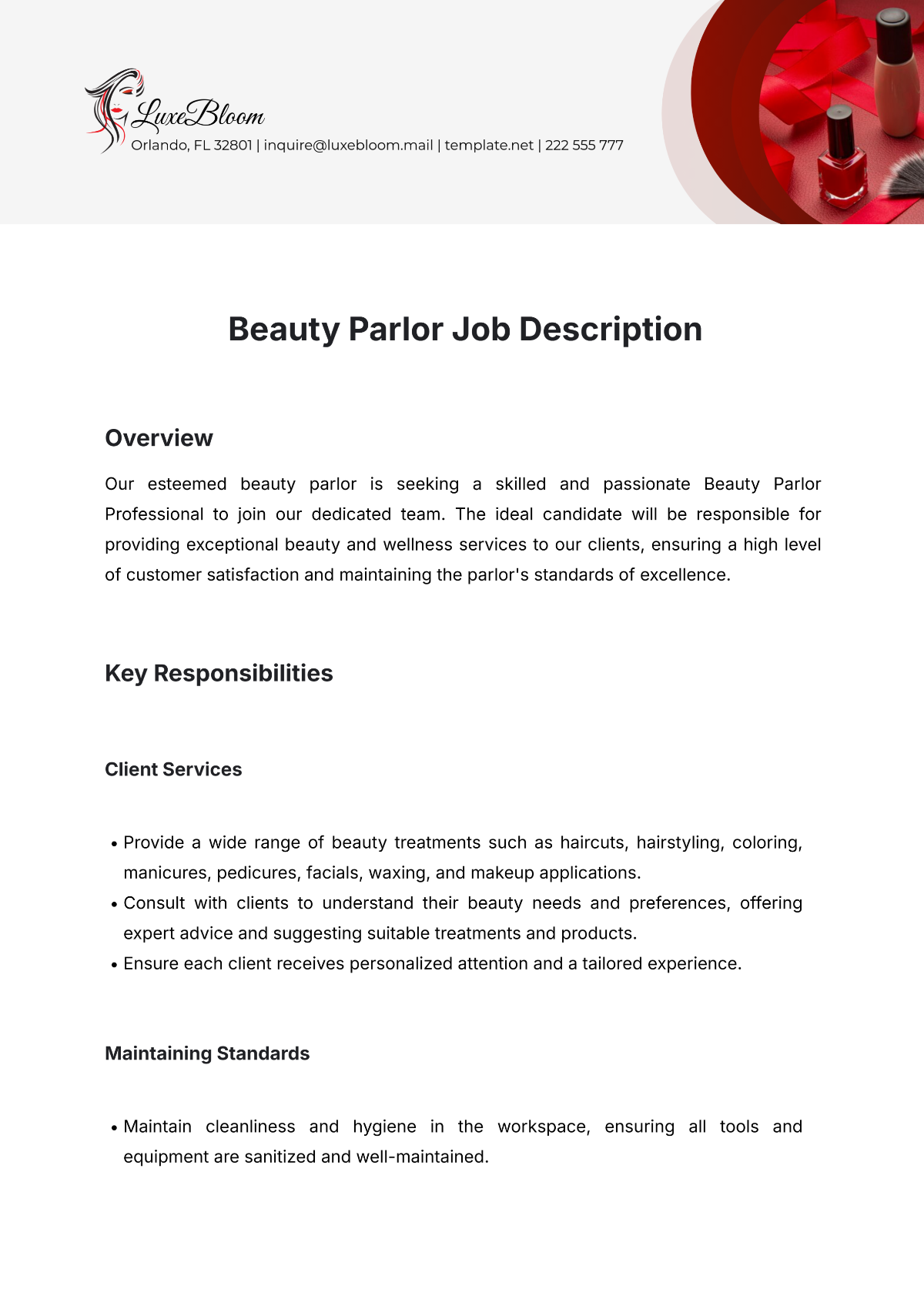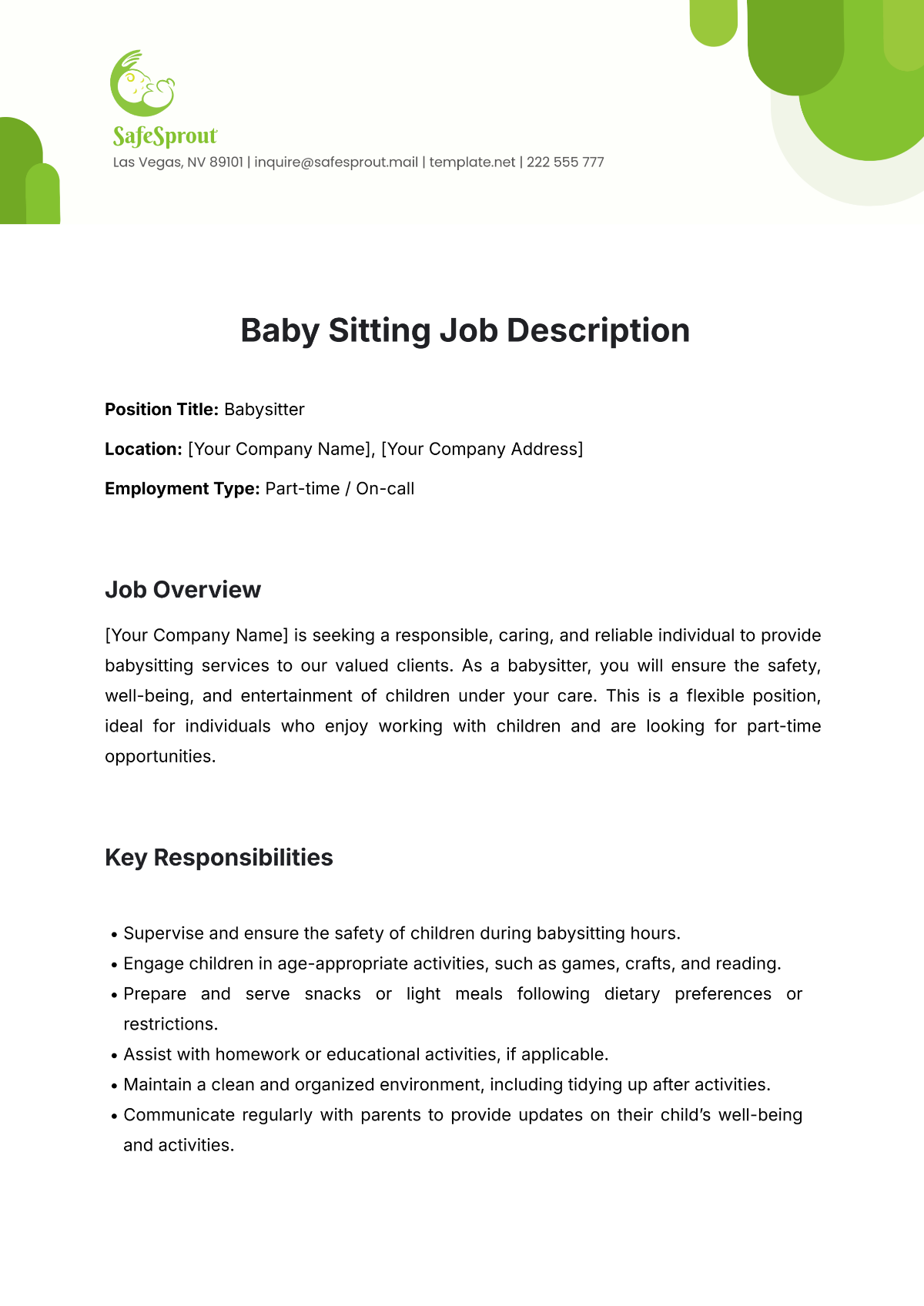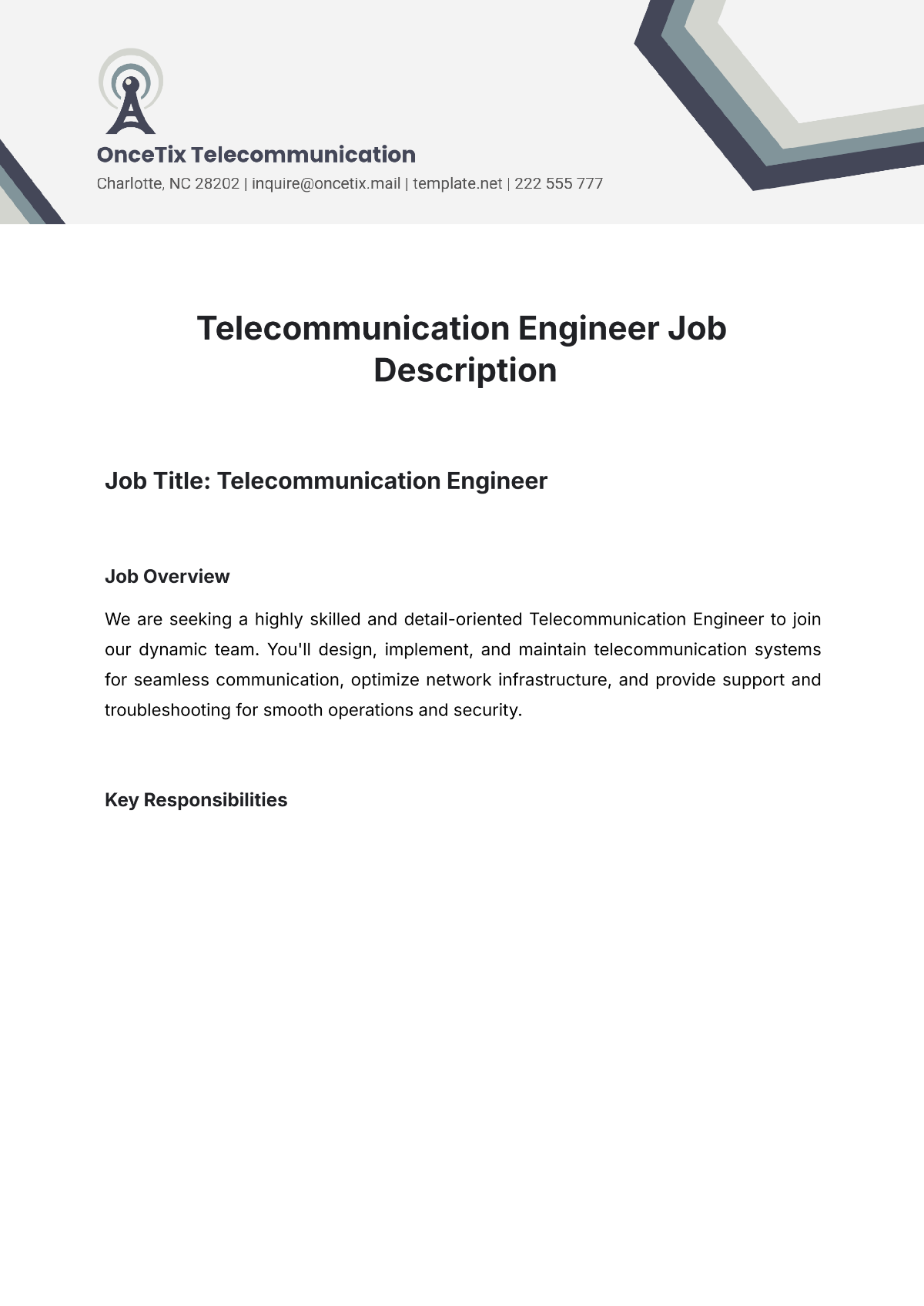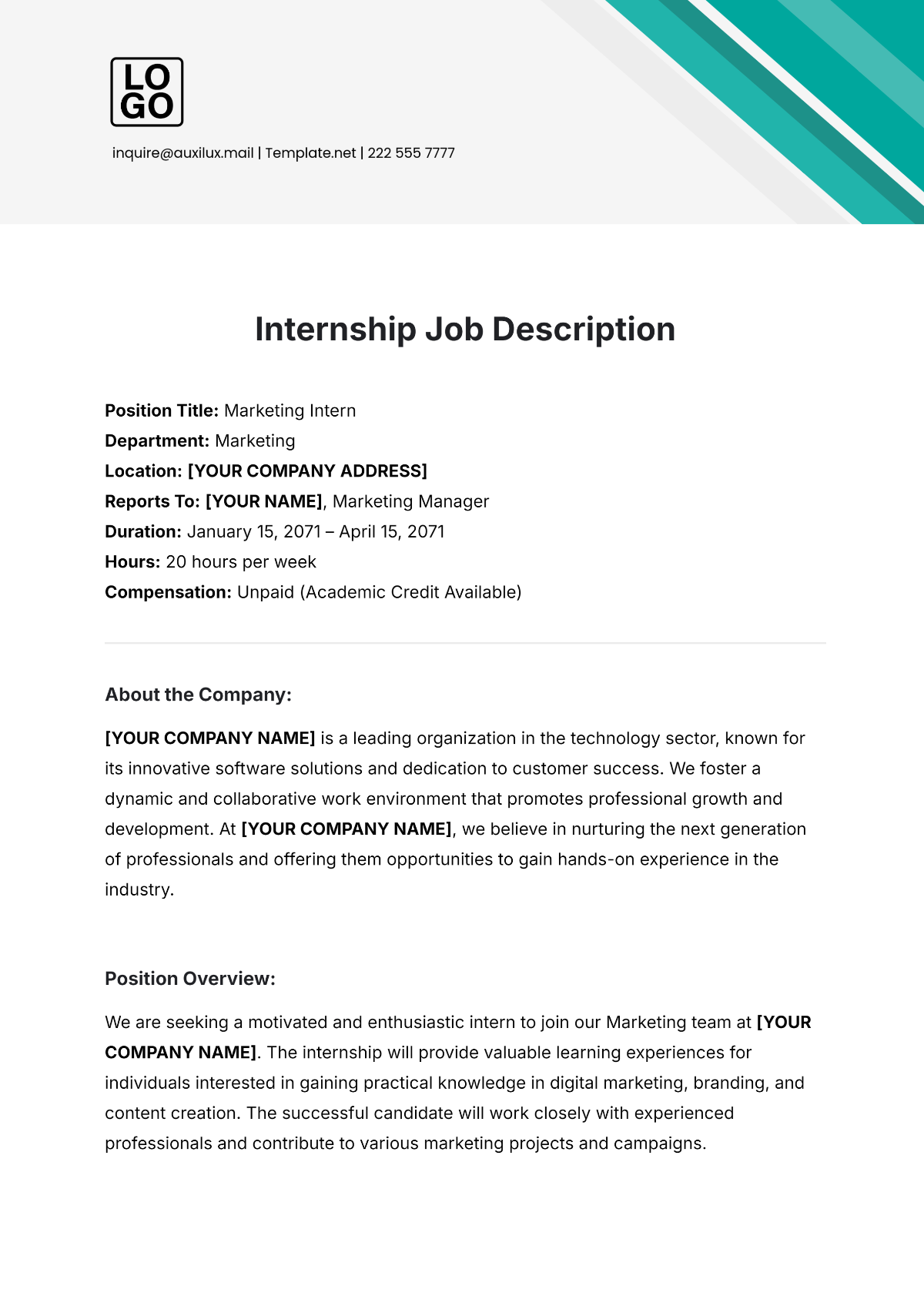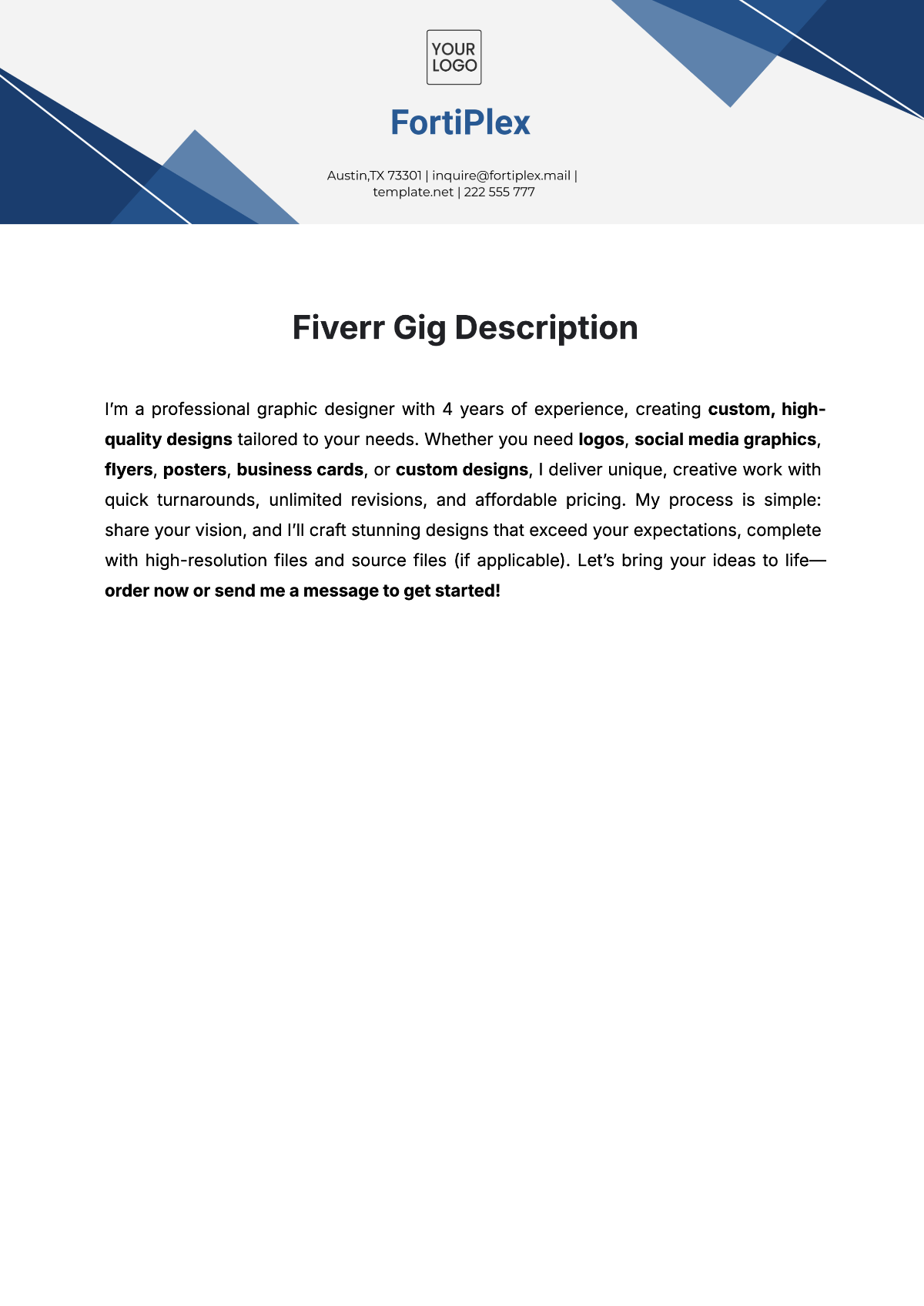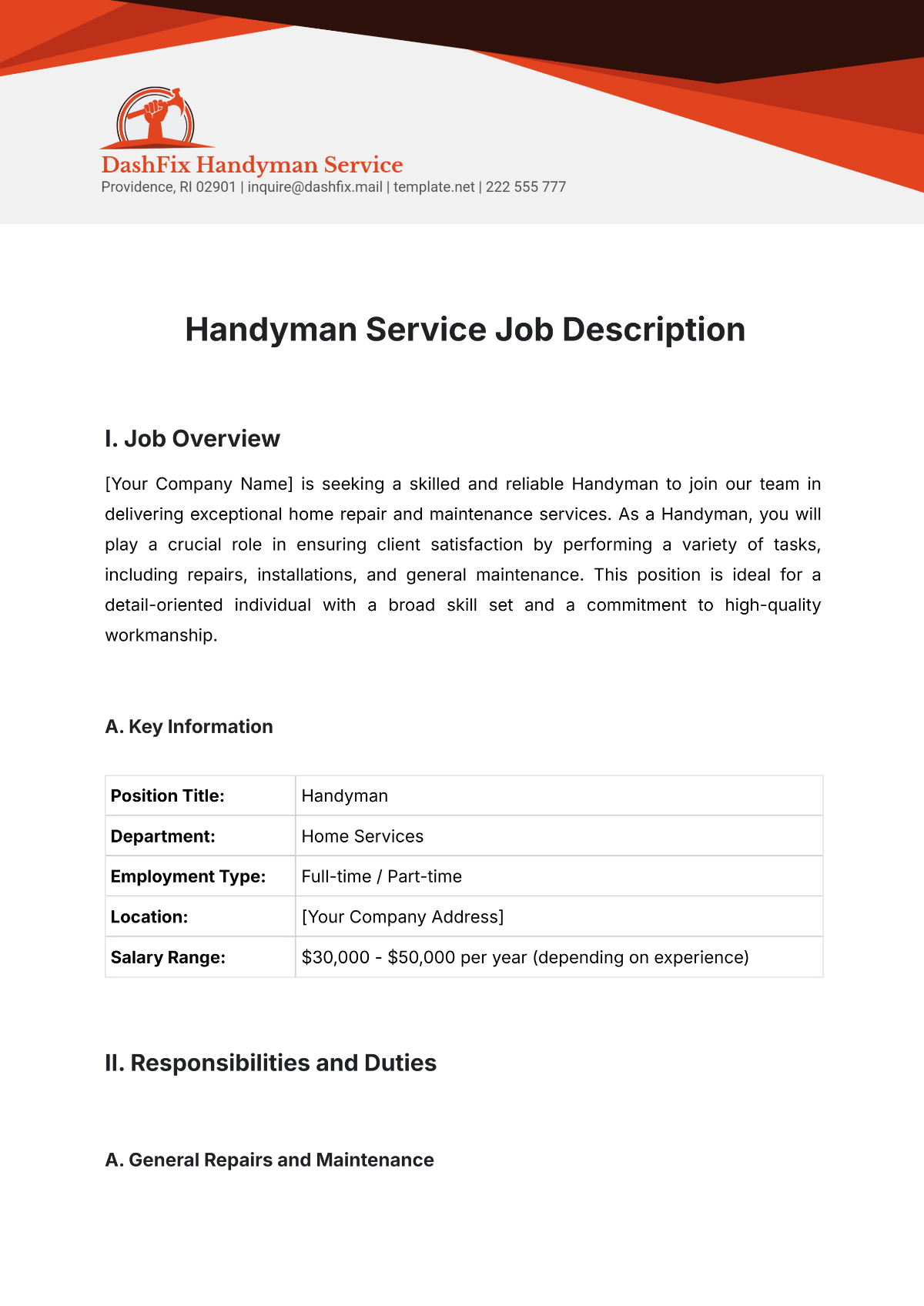Make your Job Descriptions come to life with Job Description Templates from Template.net
Get your dream team in place with Job Description Maker Templates from Template.net. Whether you're an HR professional or a small business owner, keep your hiring process streamlined, attract the best candidates, and save valuable time with expertly crafted job descriptions. Use these templates to promote a new position within your company or inform your team about role updates. Customize with specific details such as job responsibilities, requirements, and contact information, ensuring clarity and professionalism in every description. No advanced HR skills required, and with professional-grade design, creating impactful job descriptions is easier than ever. Take advantage of customizable layouts for print or digital distribution for seamless integration into your recruitment process.
Discover the many Job Descriptions we have on hand to match your company’s needs. Start by selecting a template that fits your open position and seamlessly swap in your specific job title and customized details. Refine each template further by tweaking colors and fonts to align with your company branding. Enhance your job description with drag-and-drop icons or graphics, and consider adding animated effects using AI-powered text tools to capture attention. With endless possibilities and no technical skills required, you can have fun while creating engaging postings. Benefit from regularly updated templates with new designs added weekly, keeping your recruitment strategy fresh and effective. When you’re finished, download or share via email or export your job description to social media, ensuring you reach the widest audience possible.
